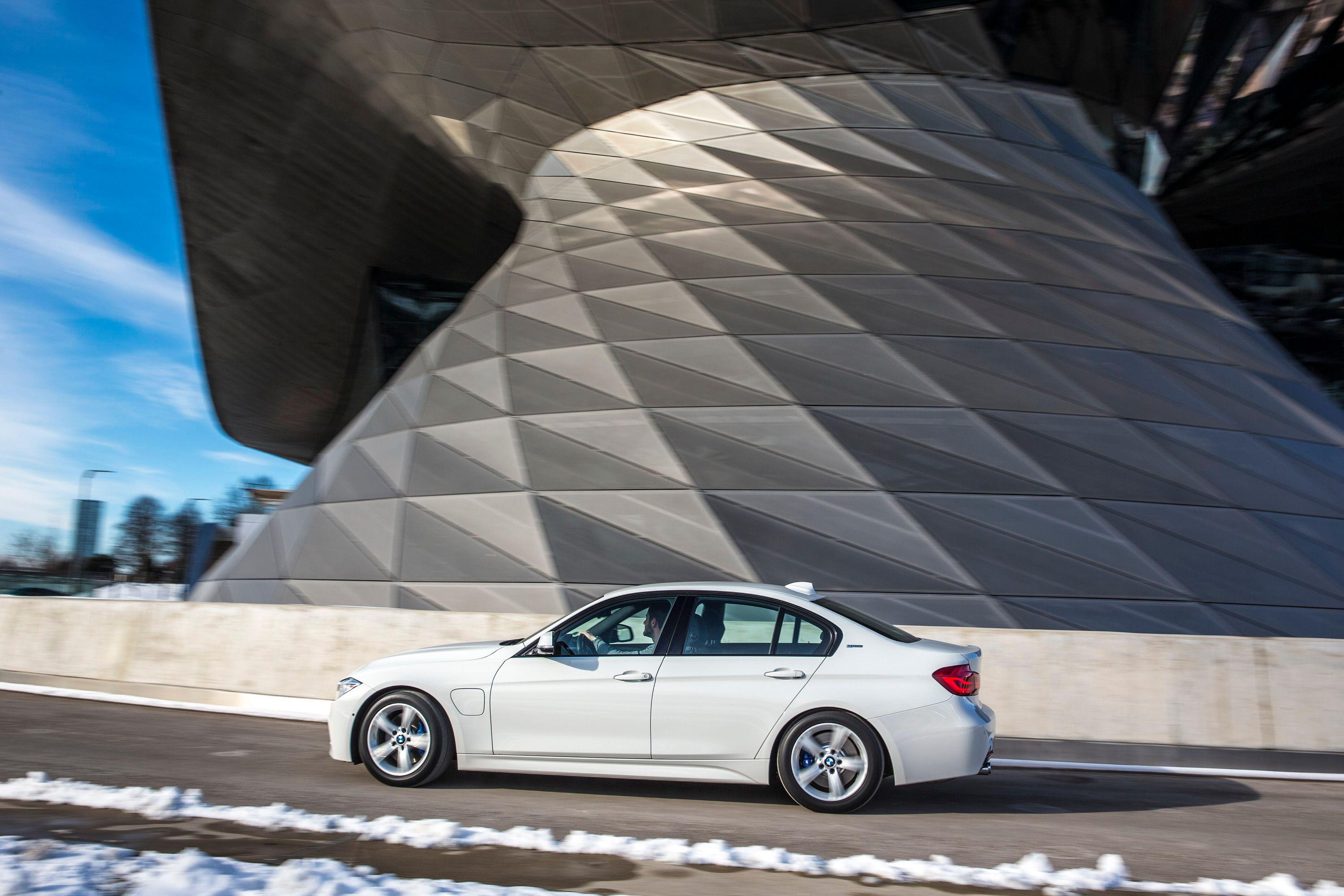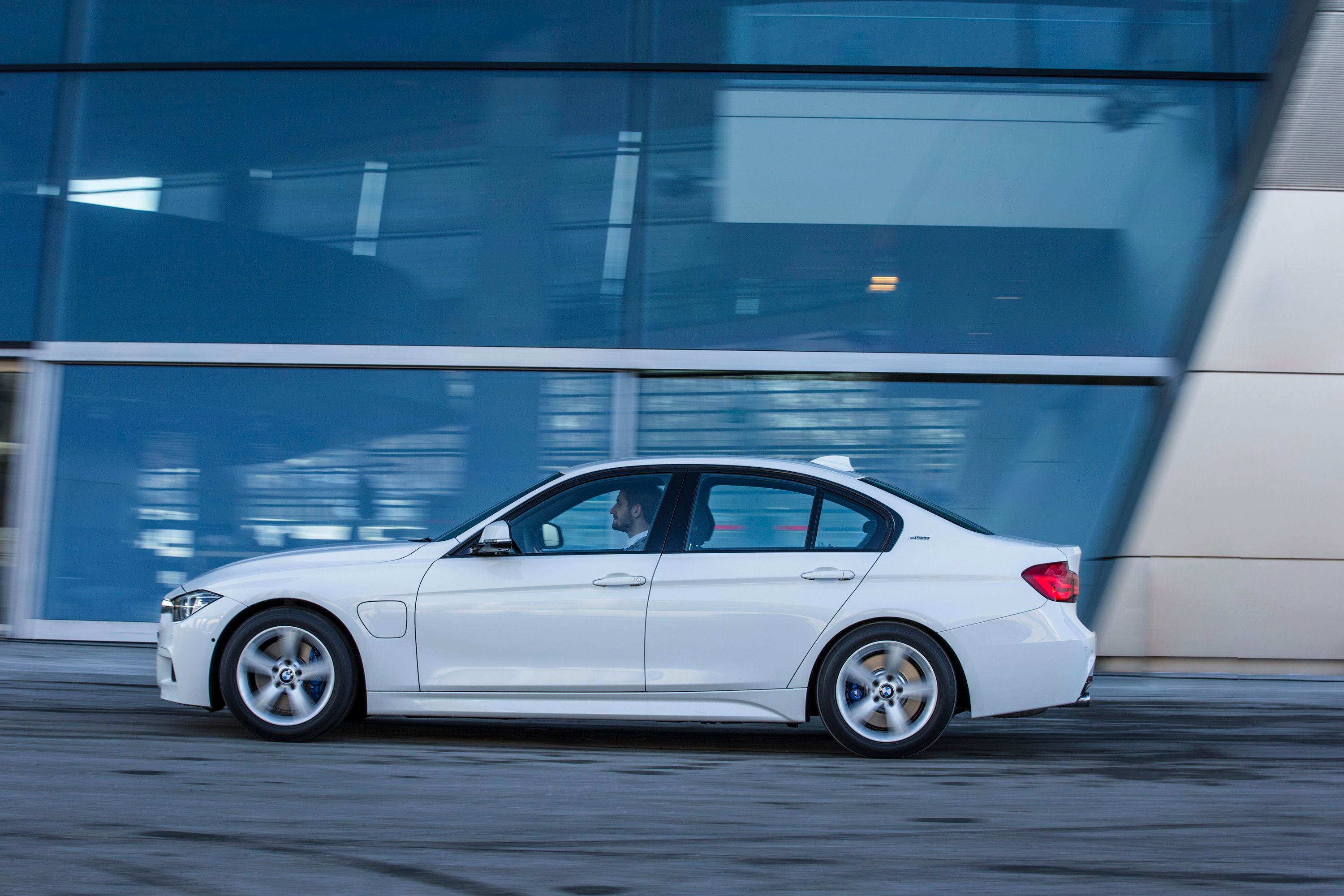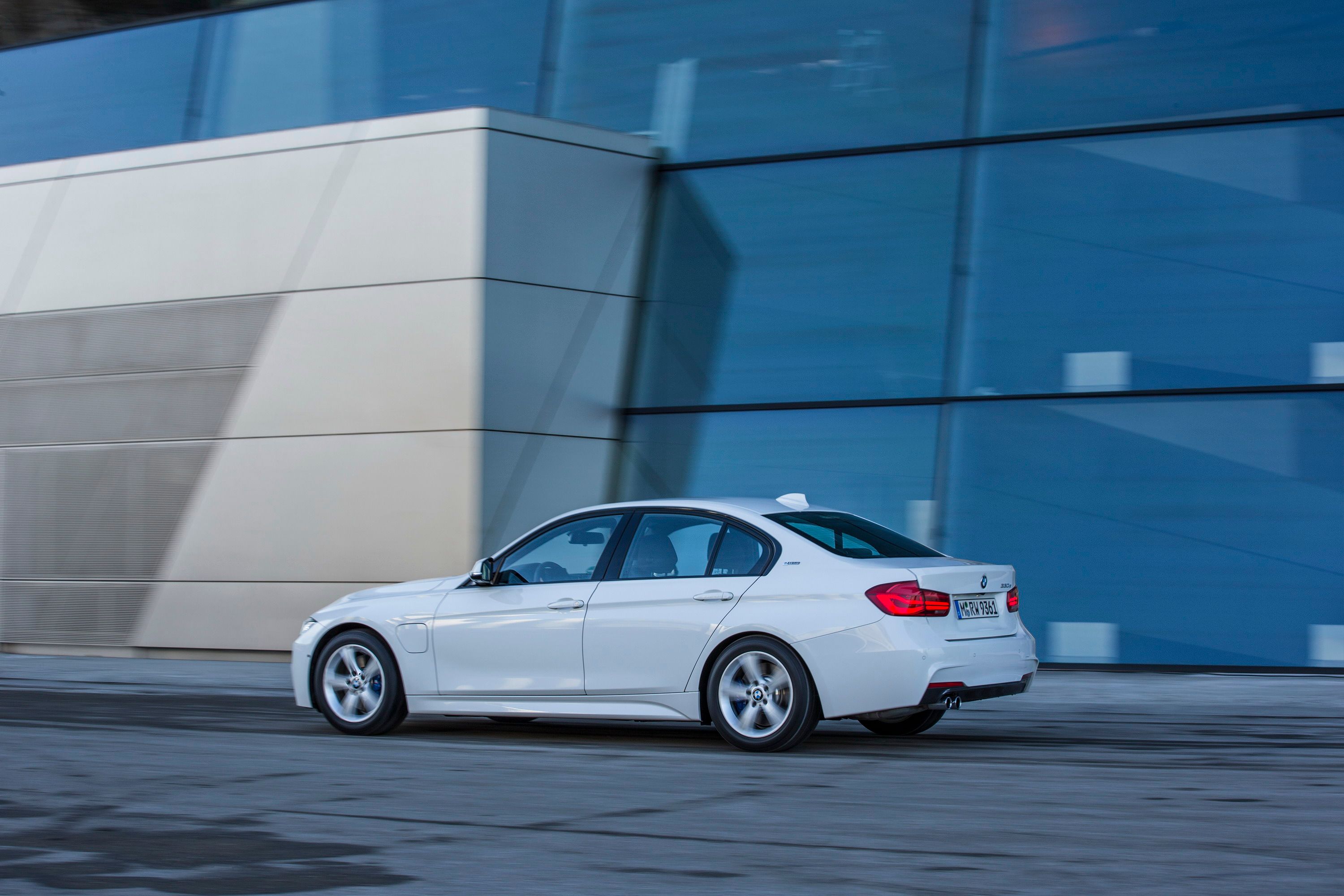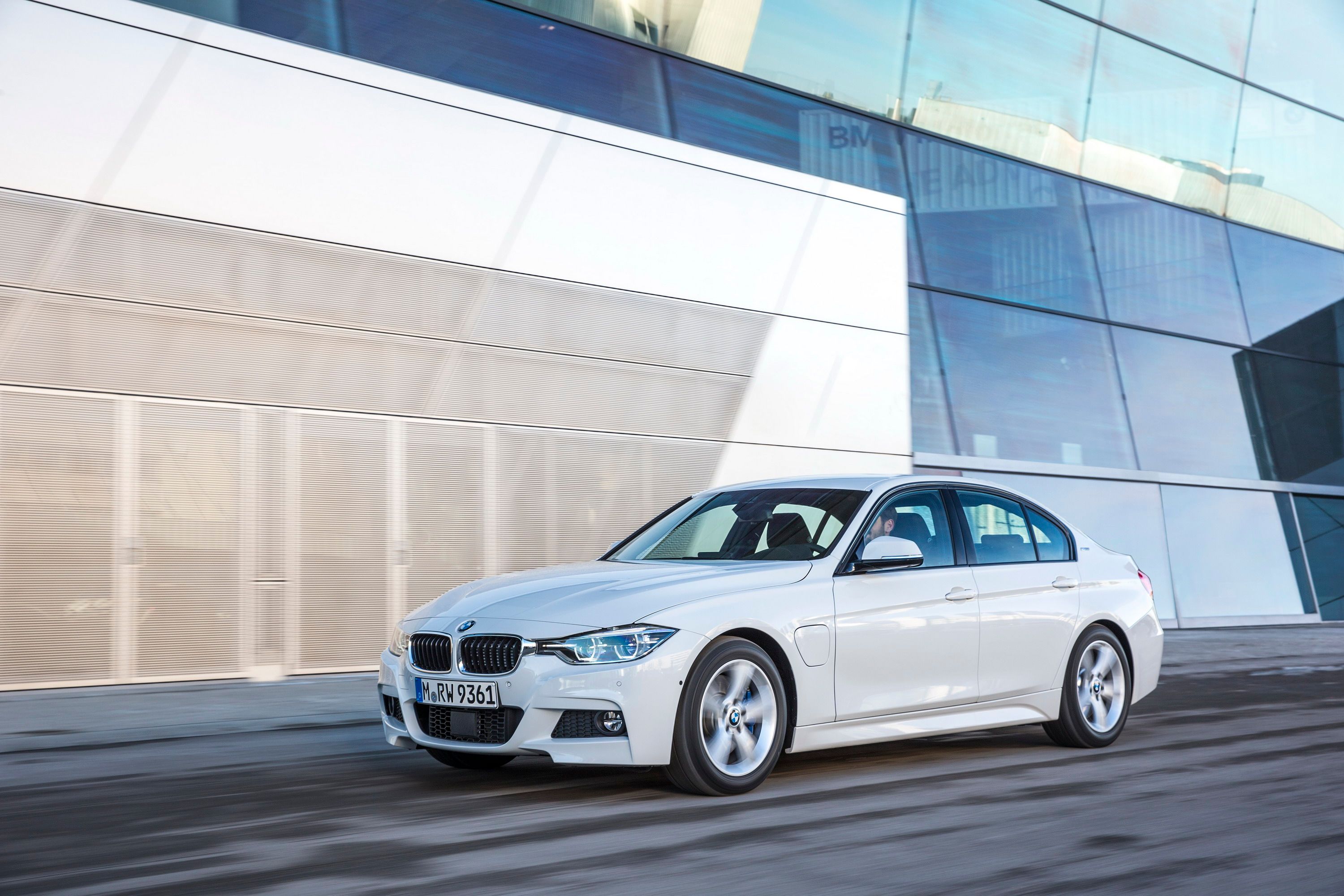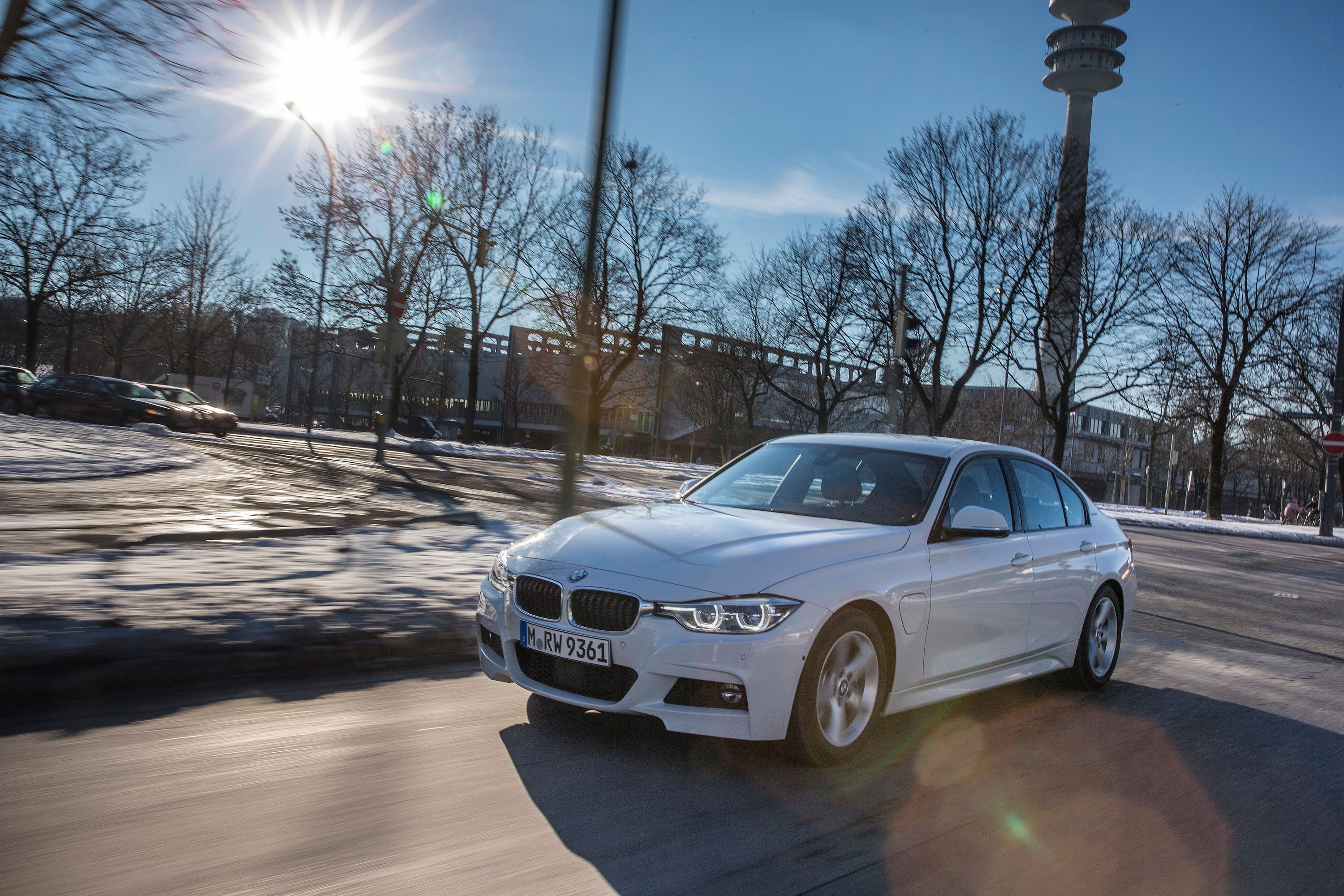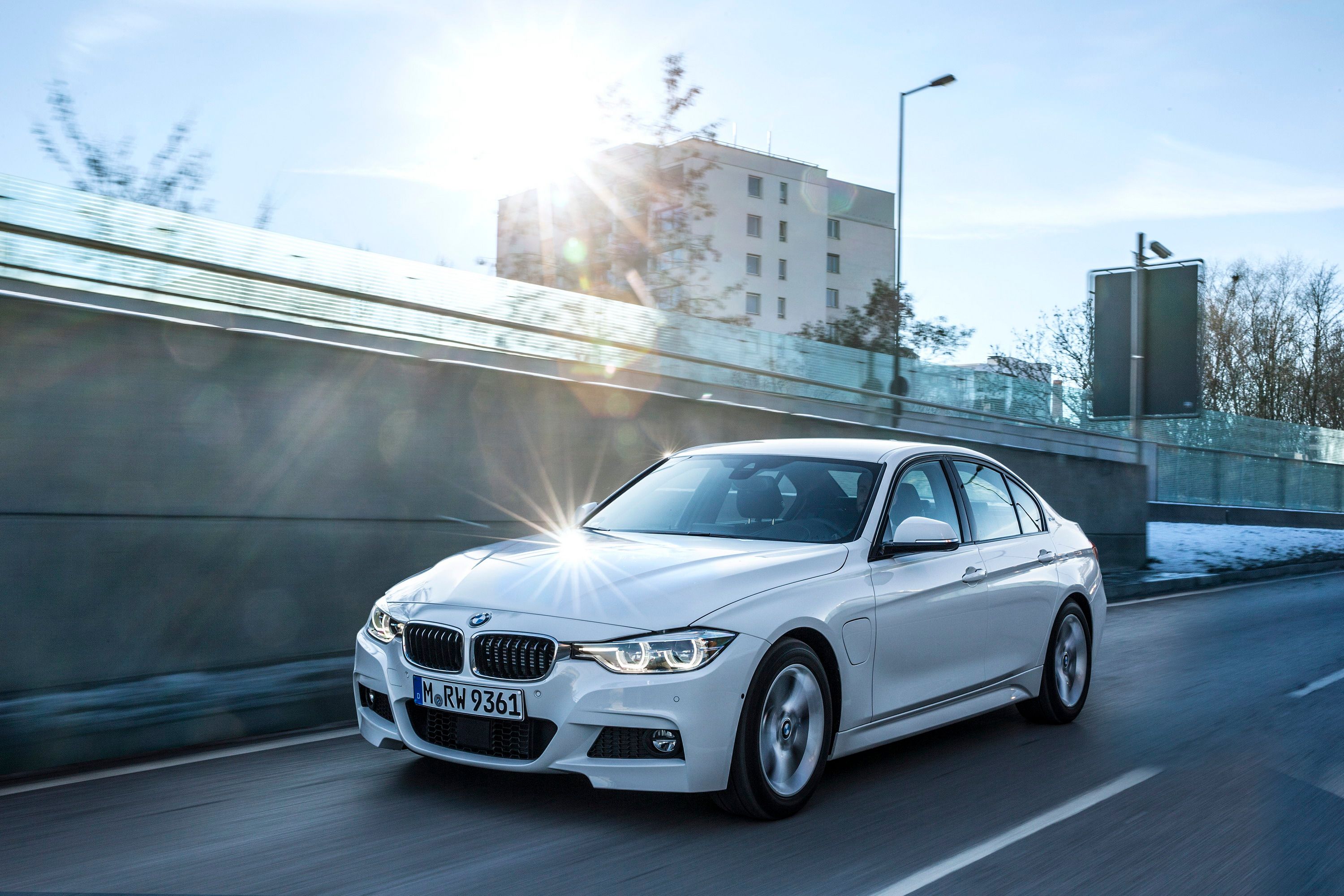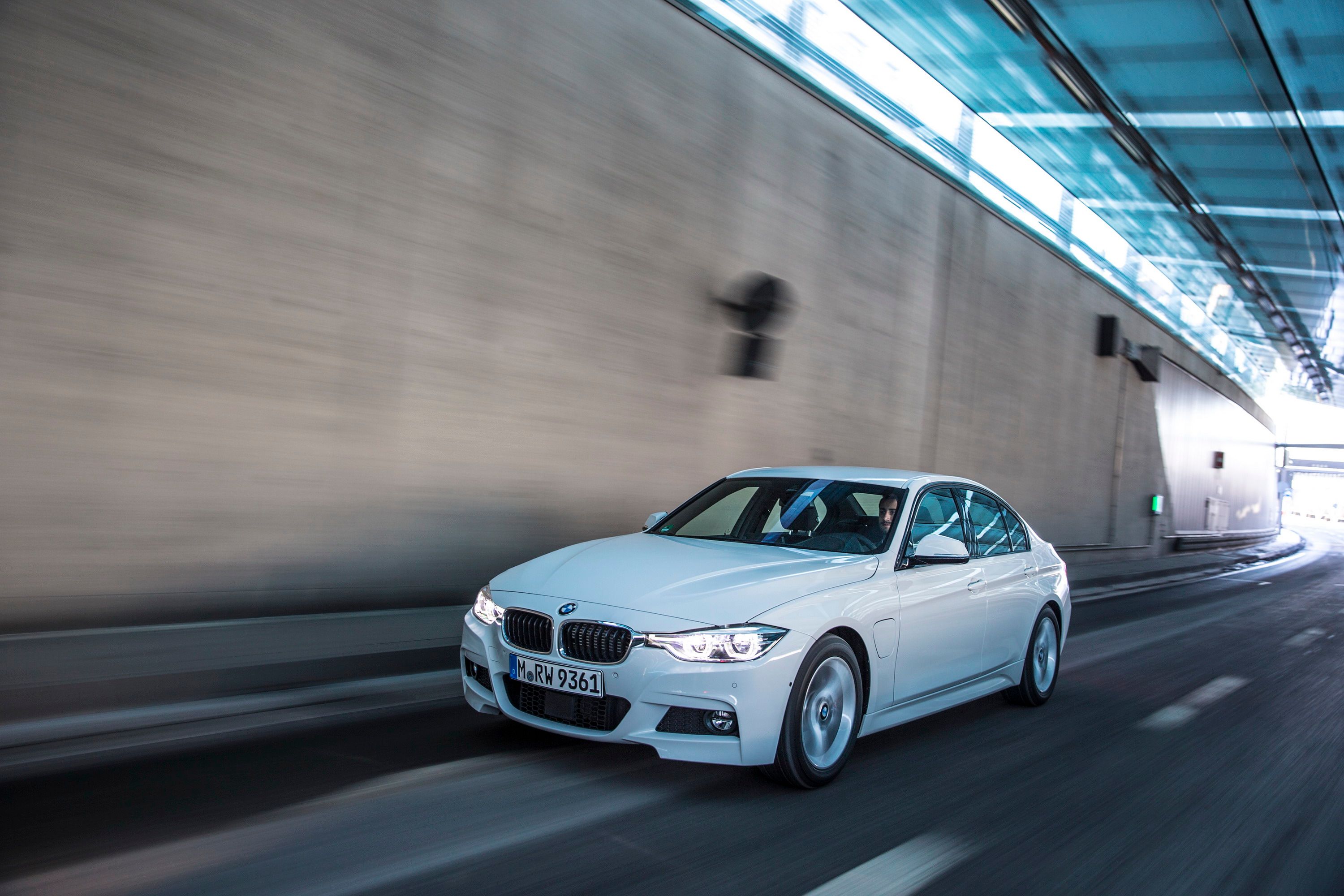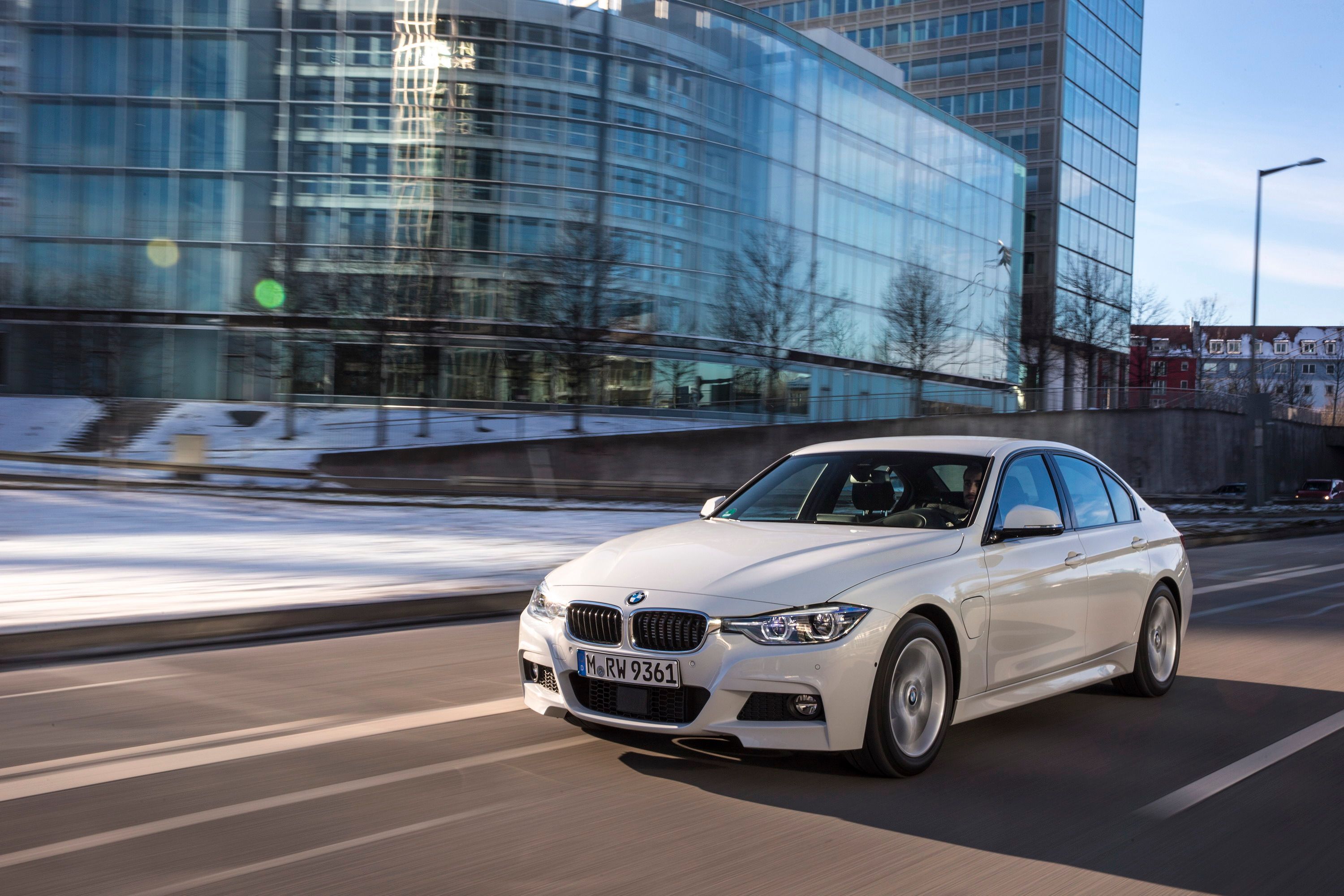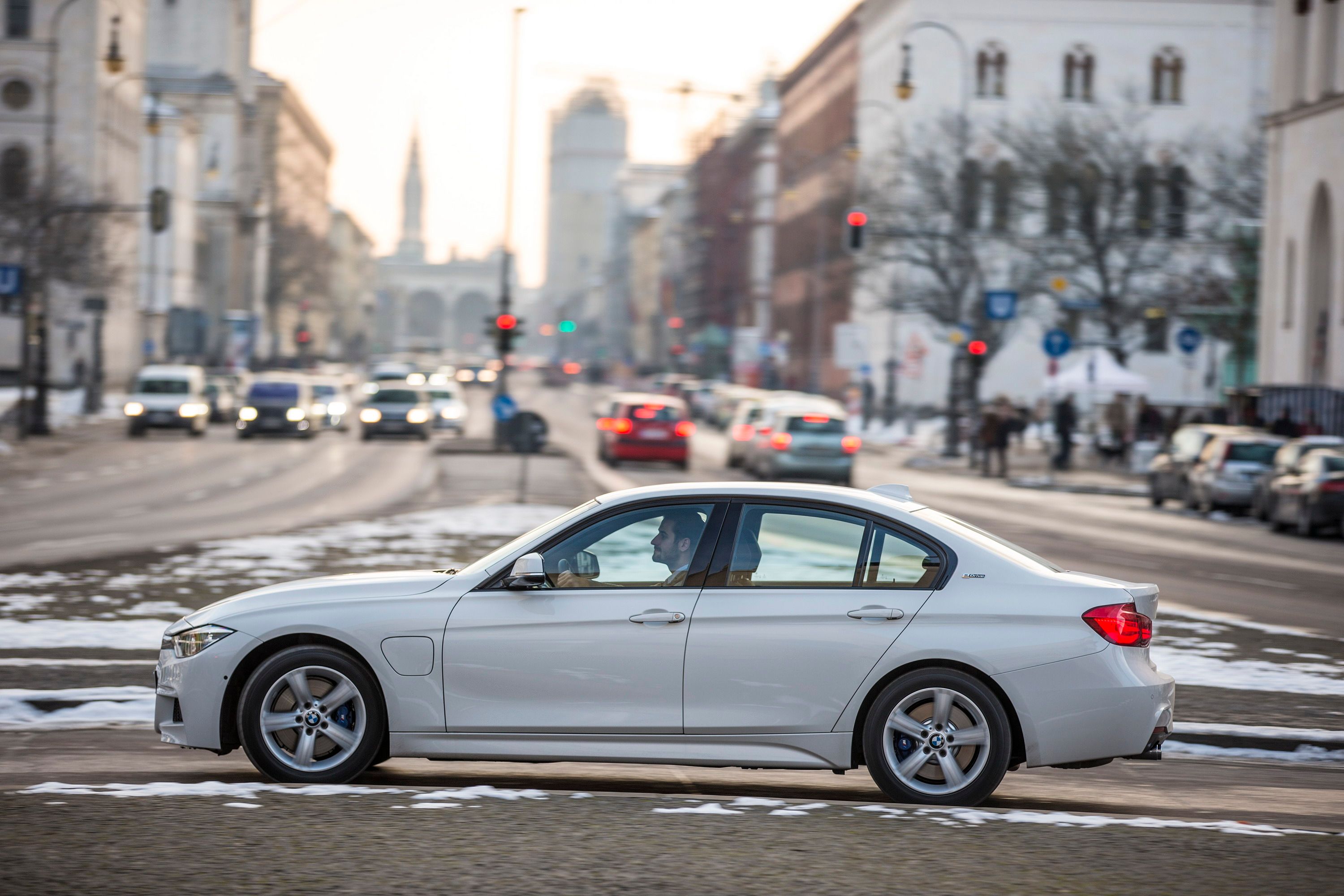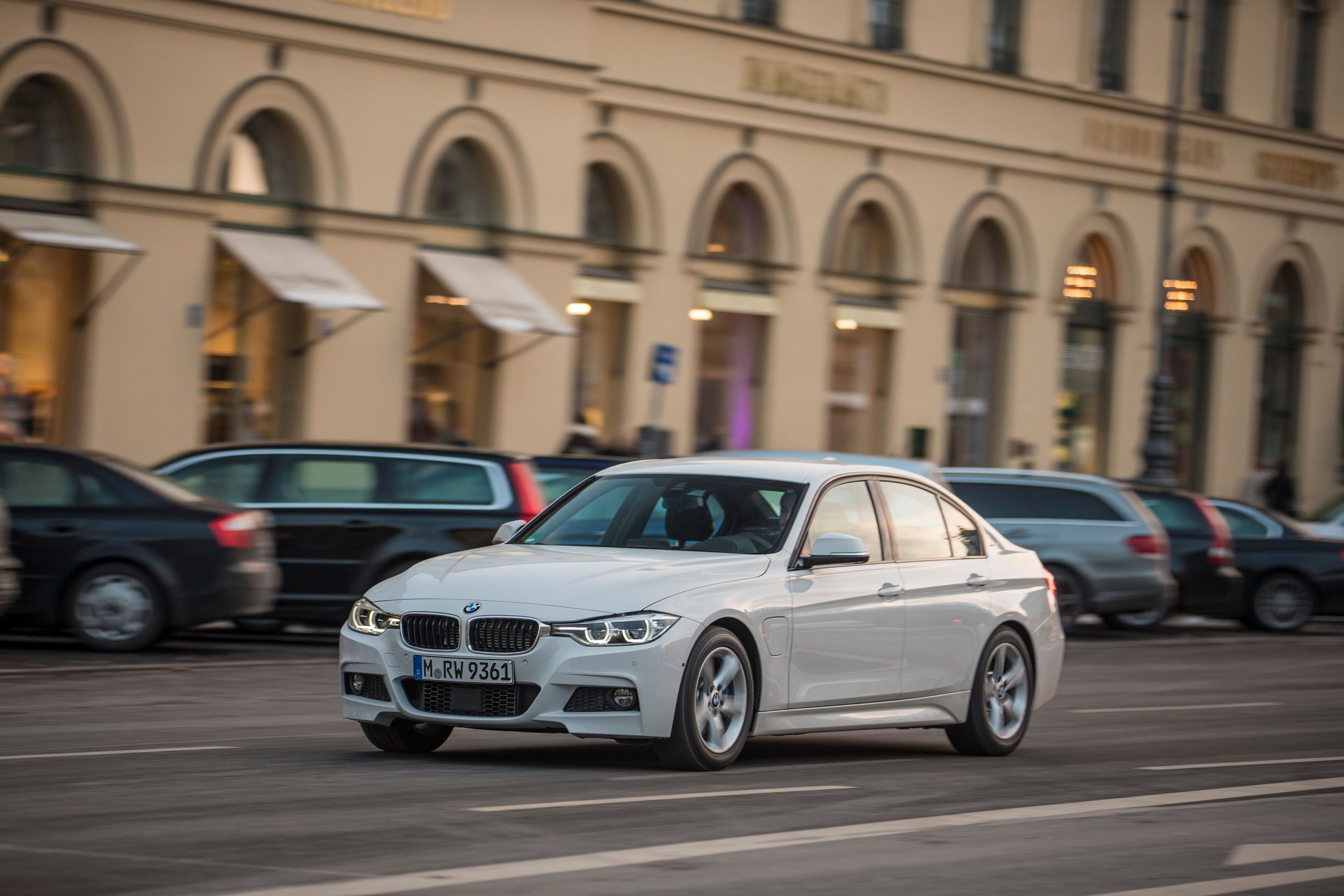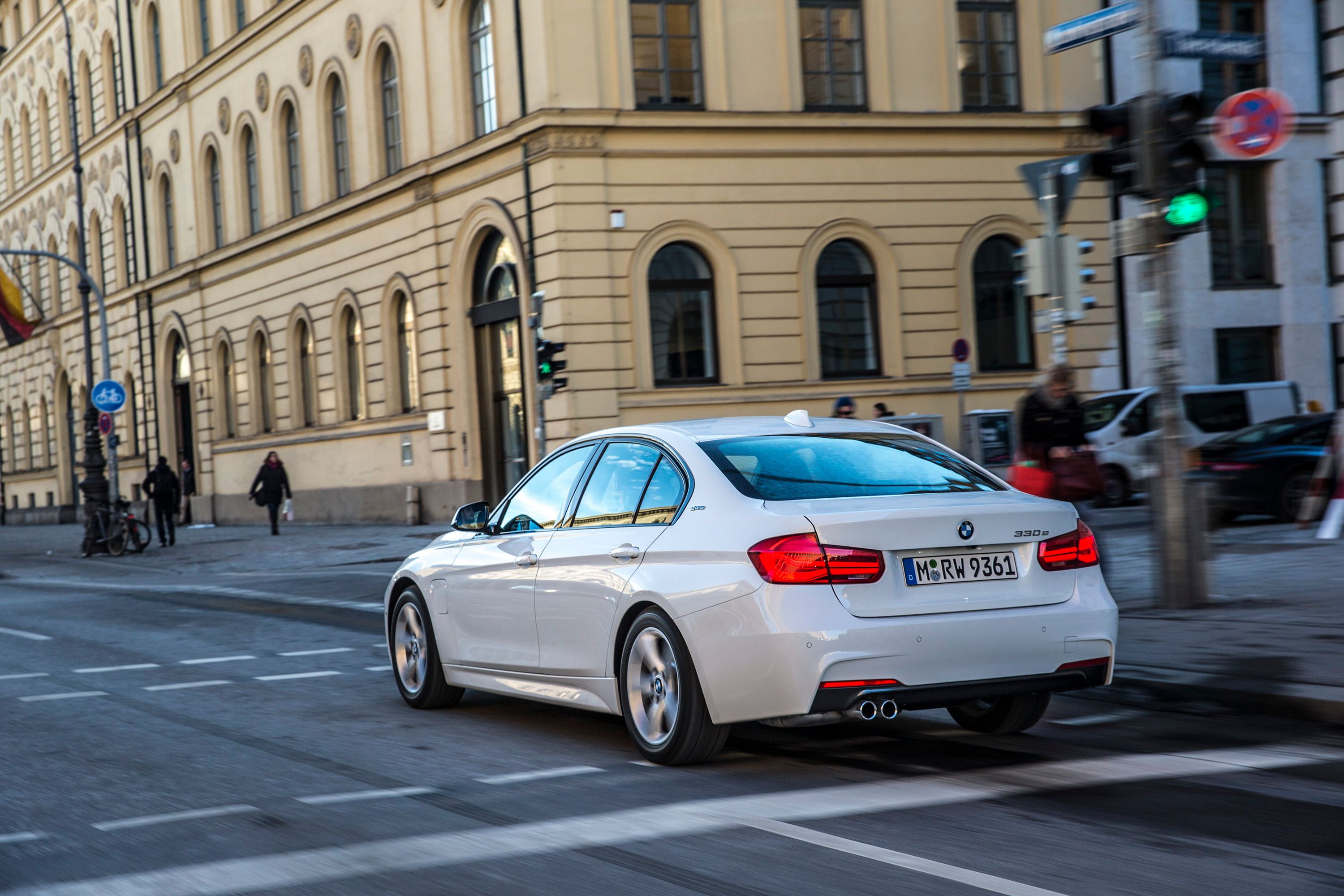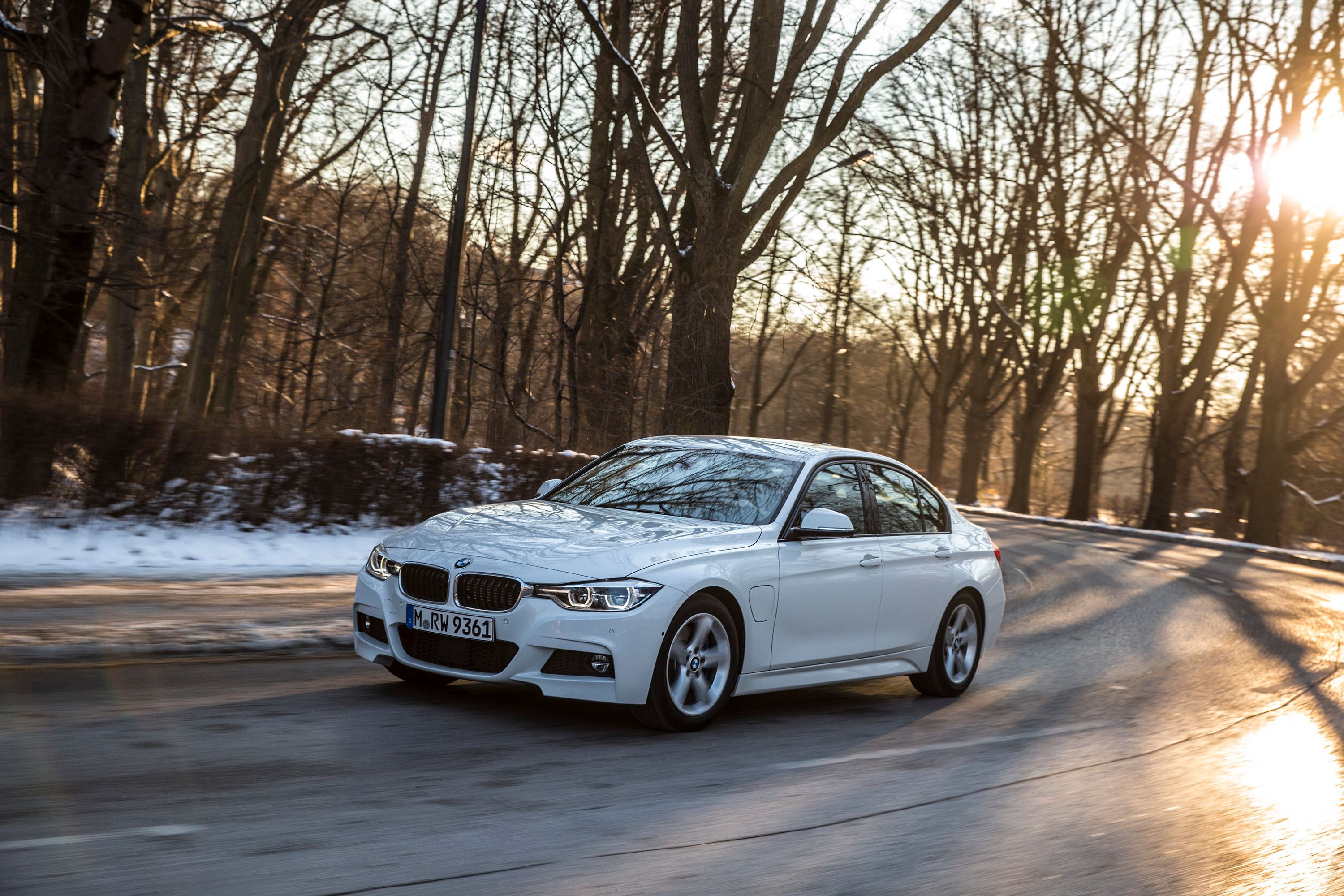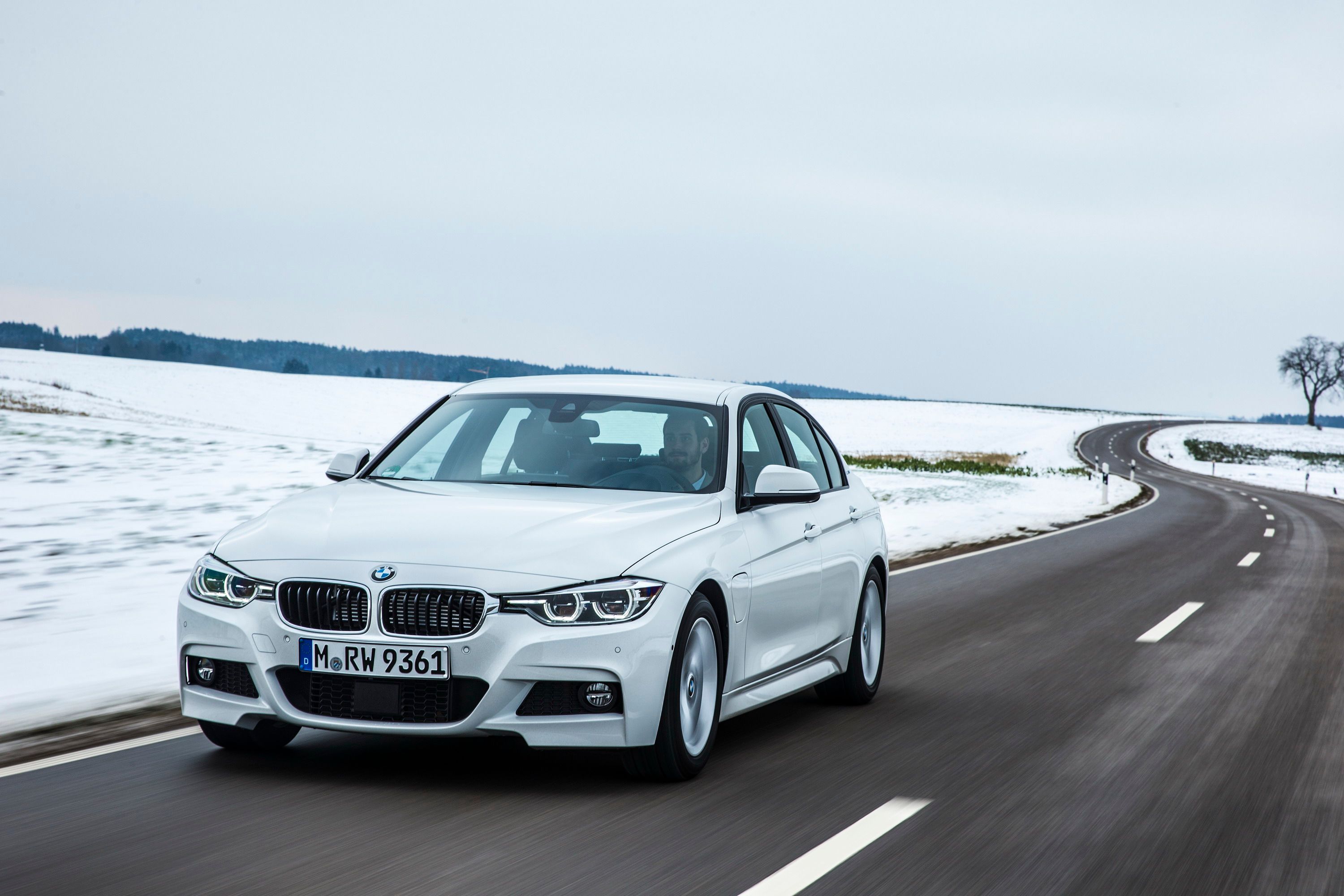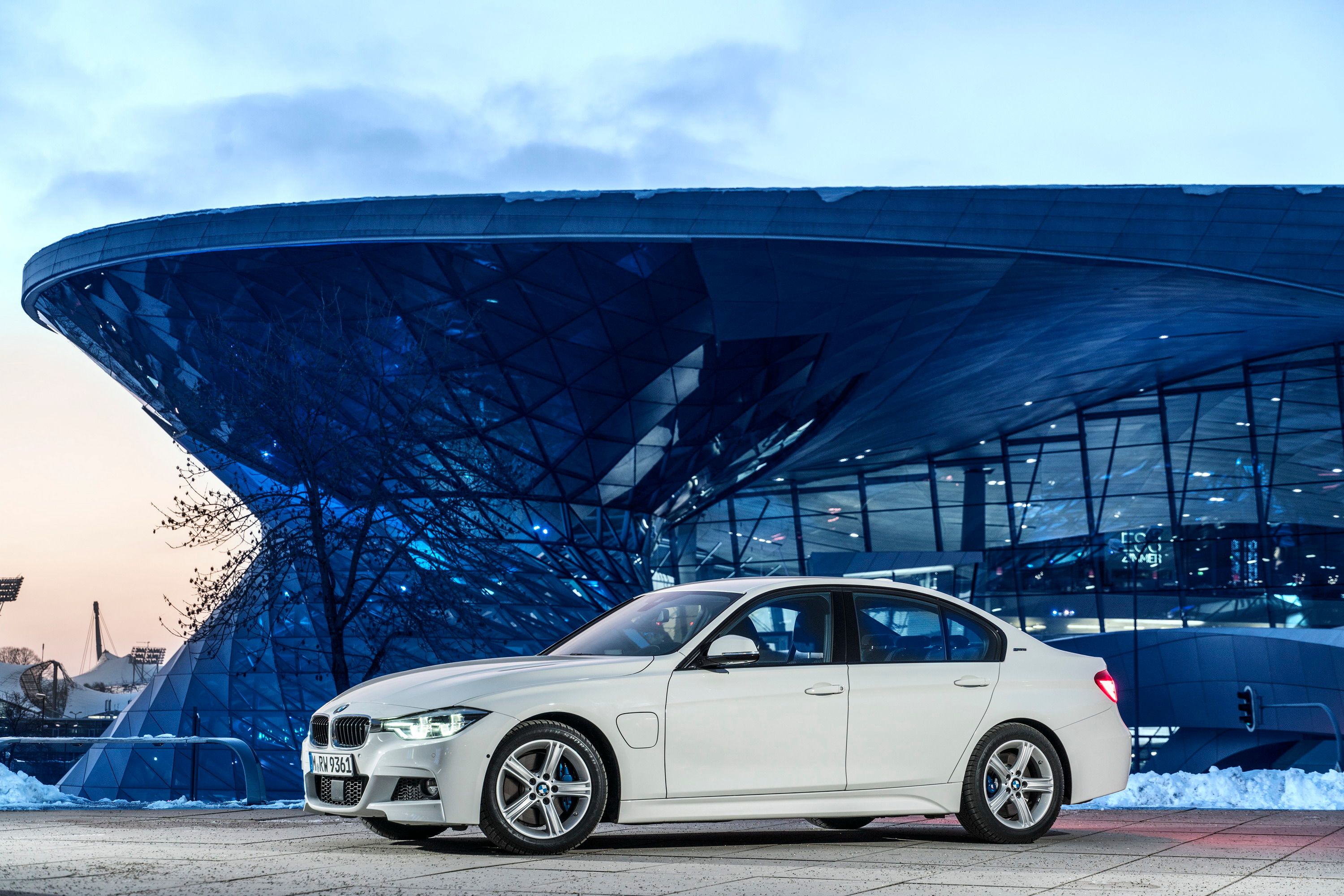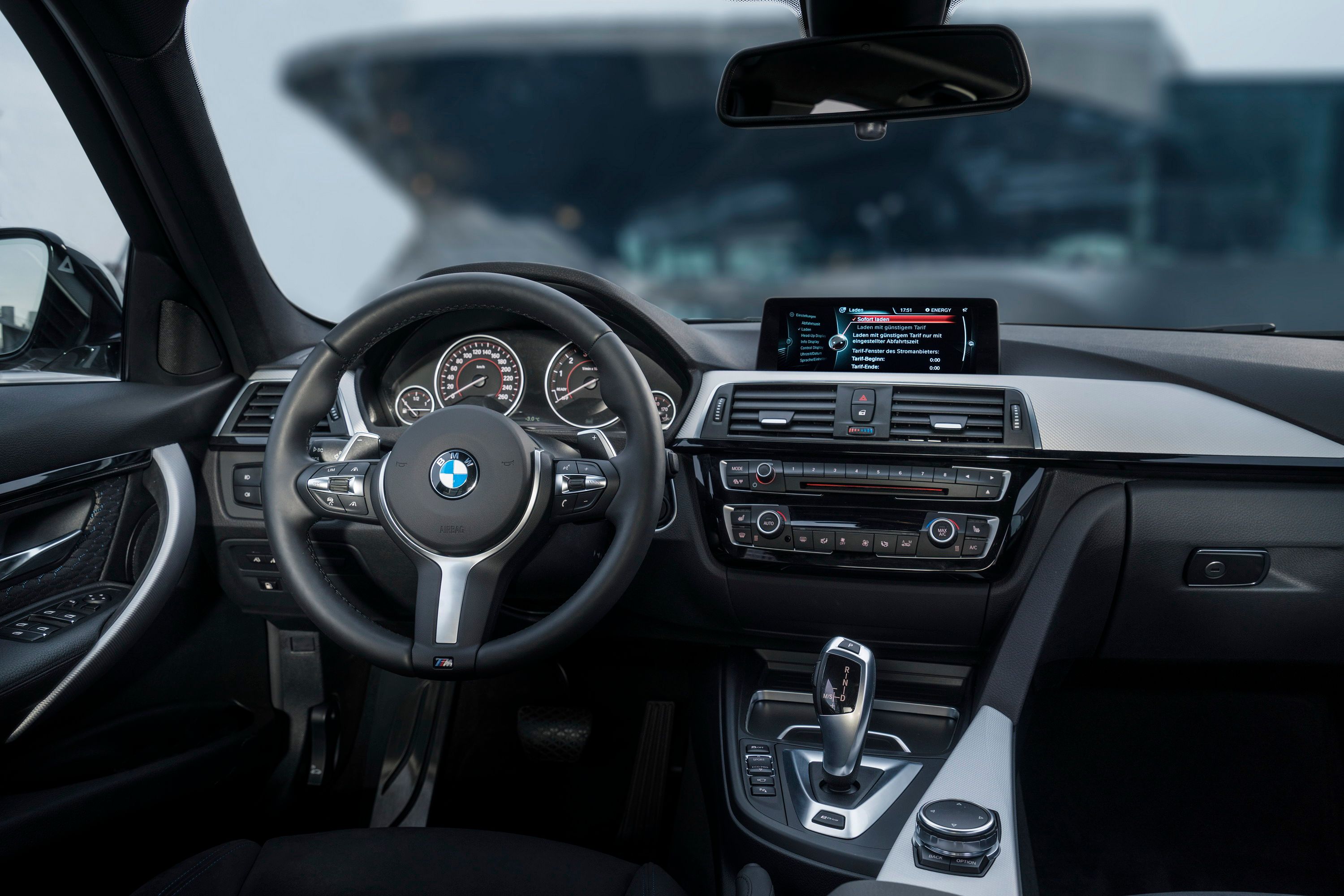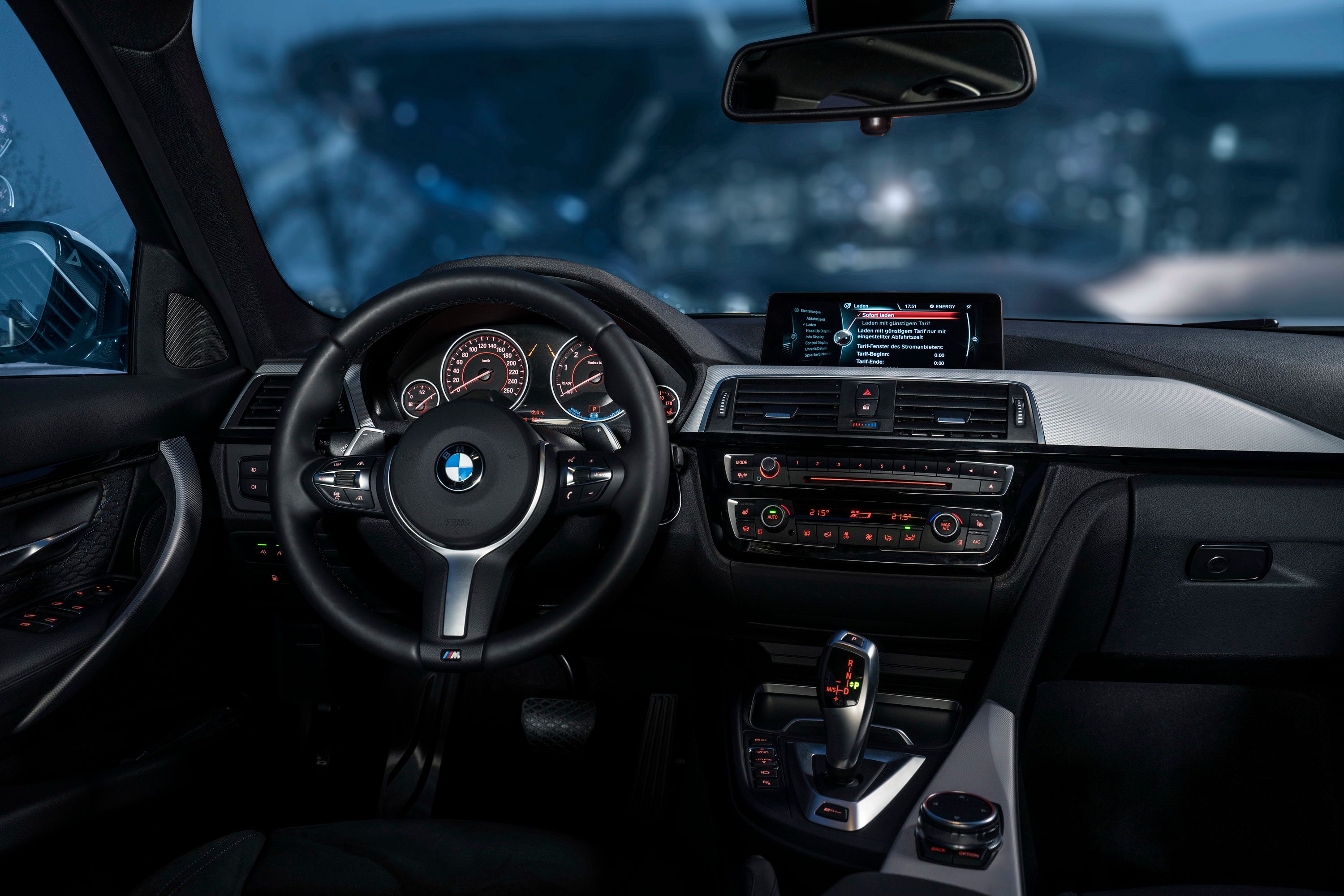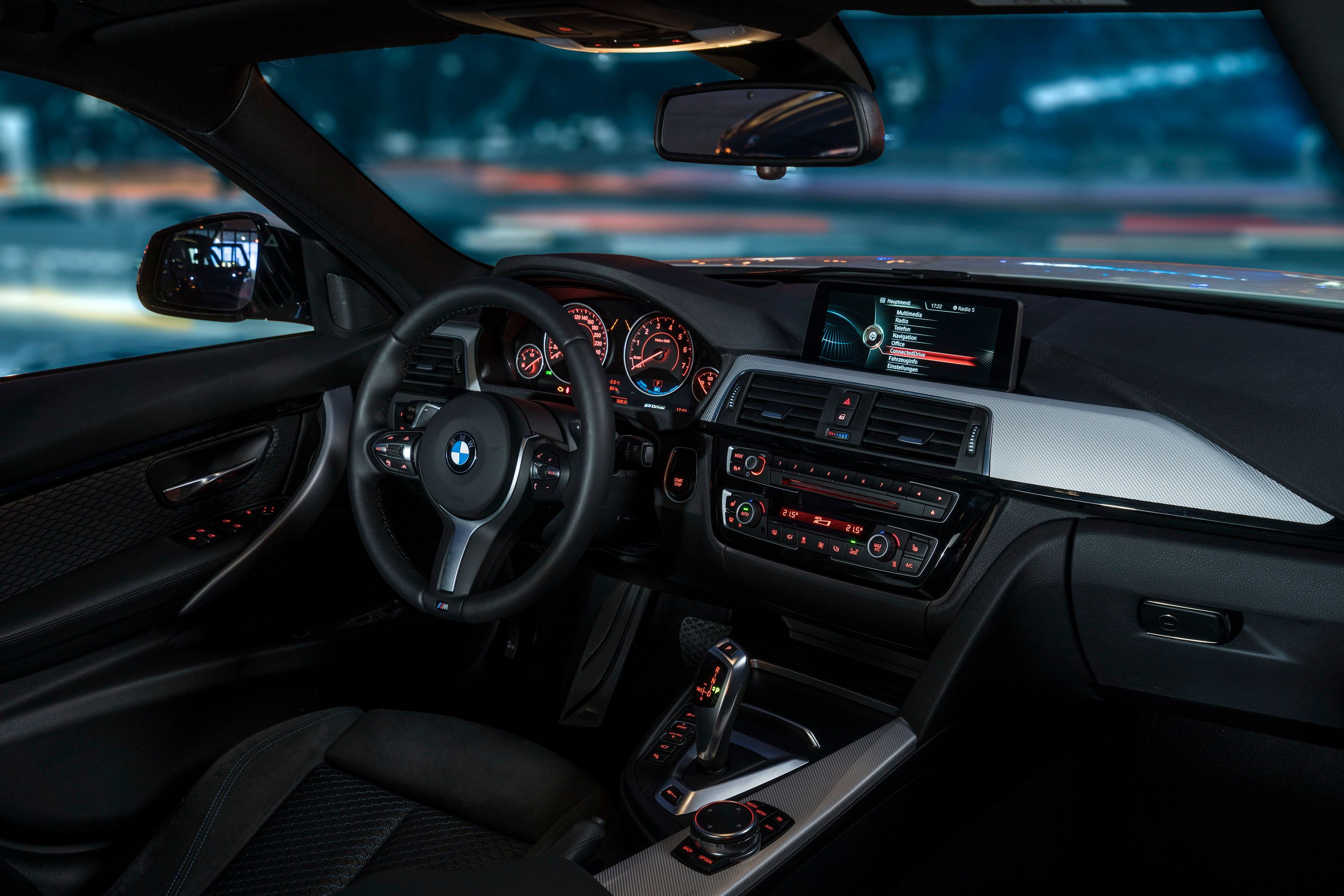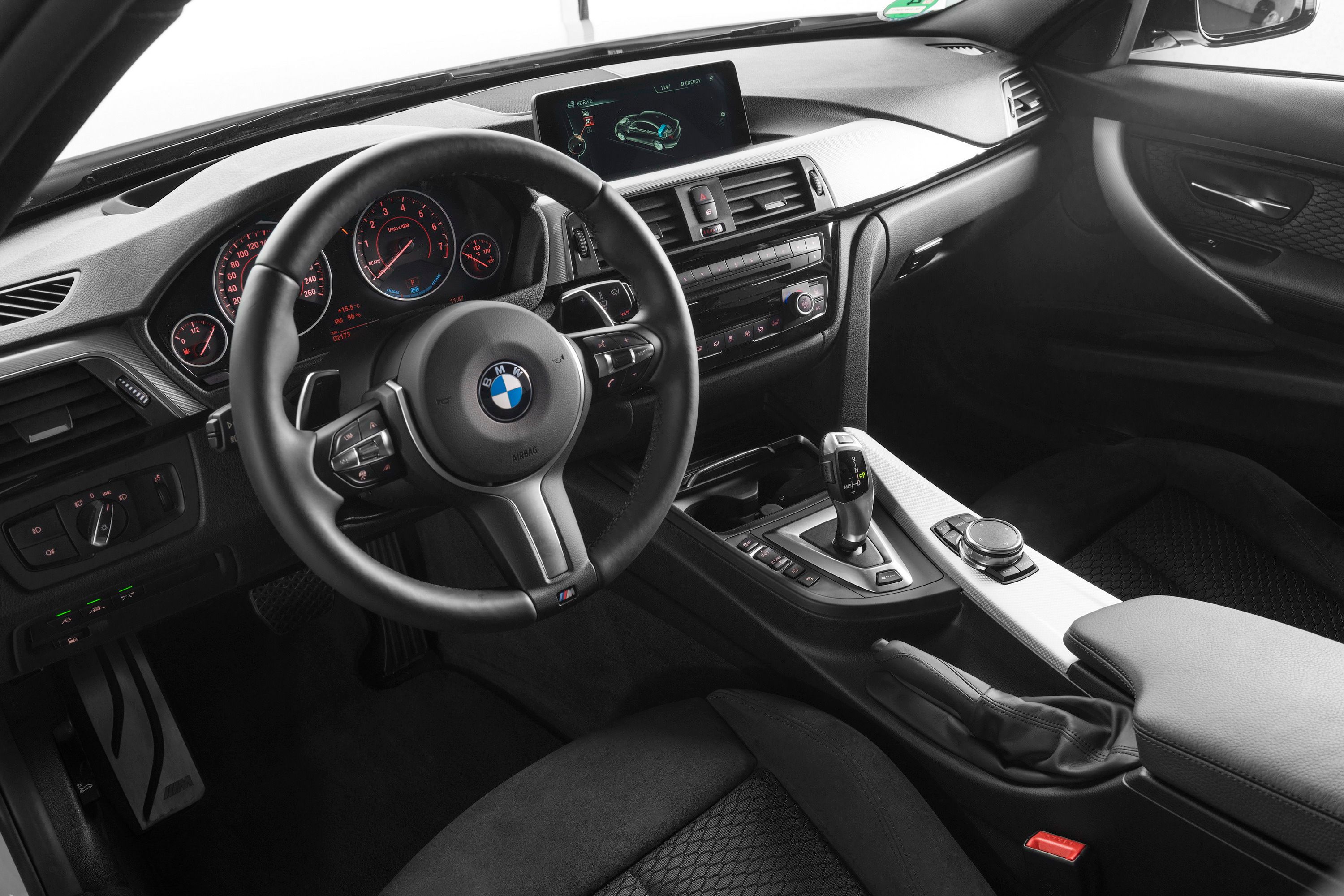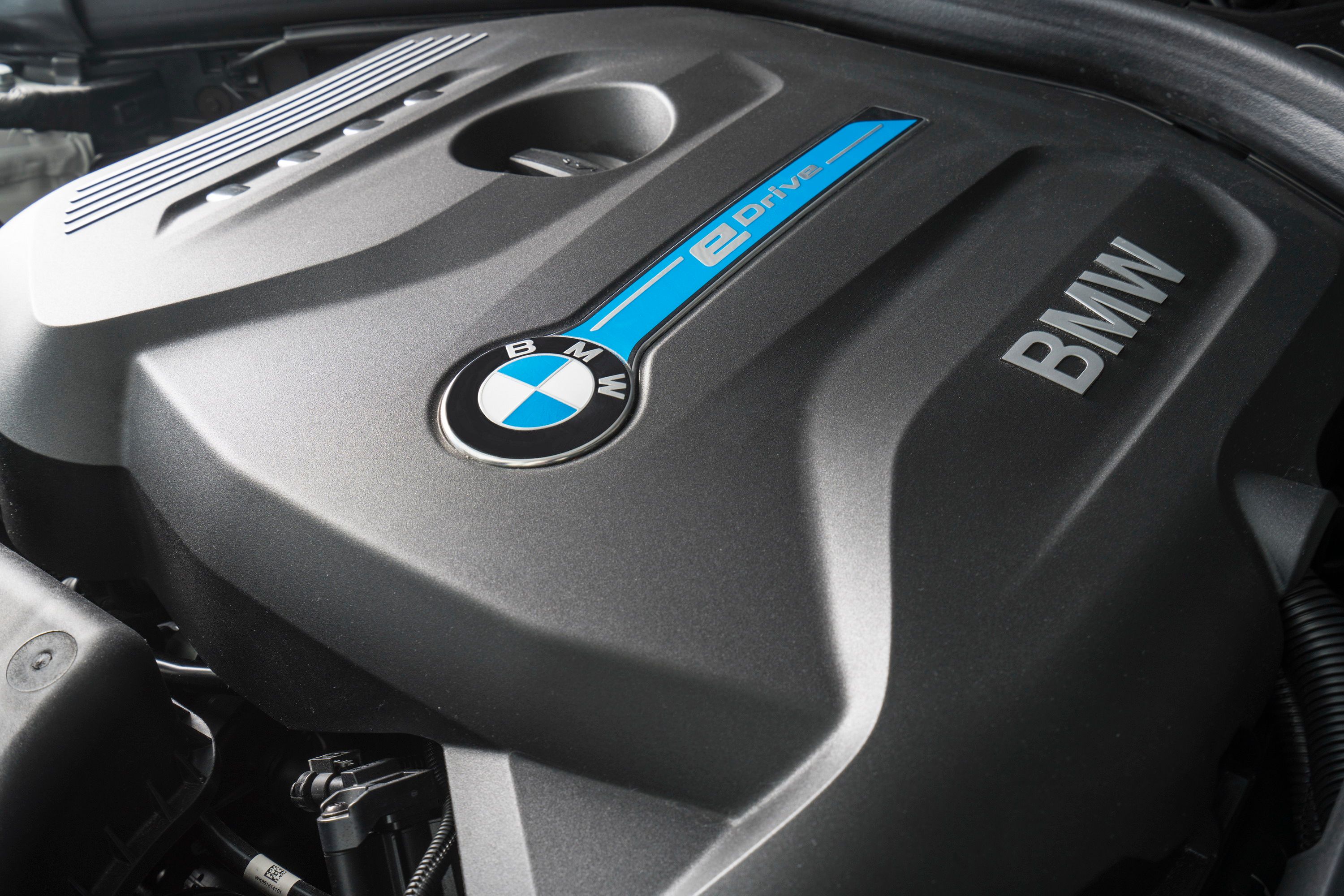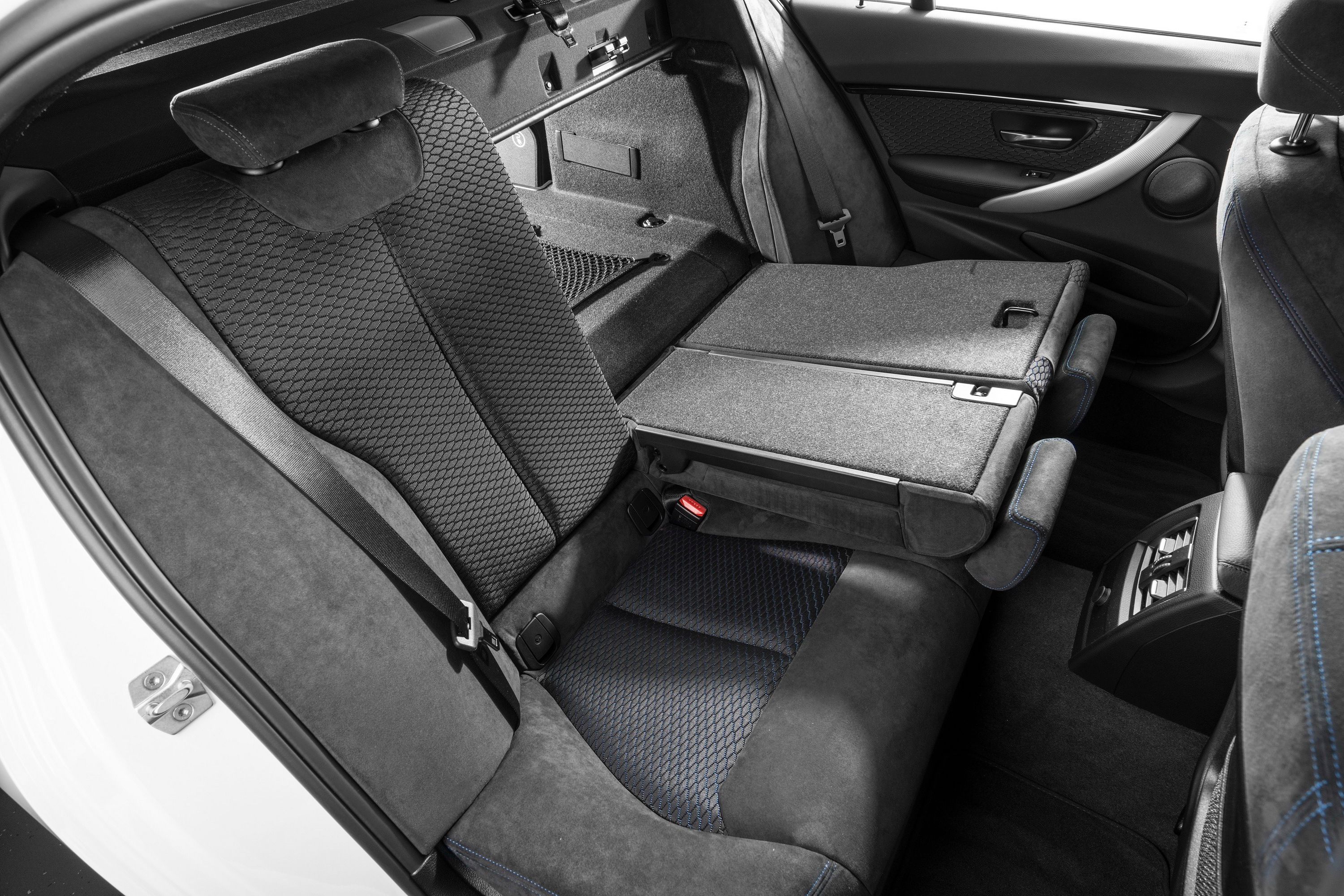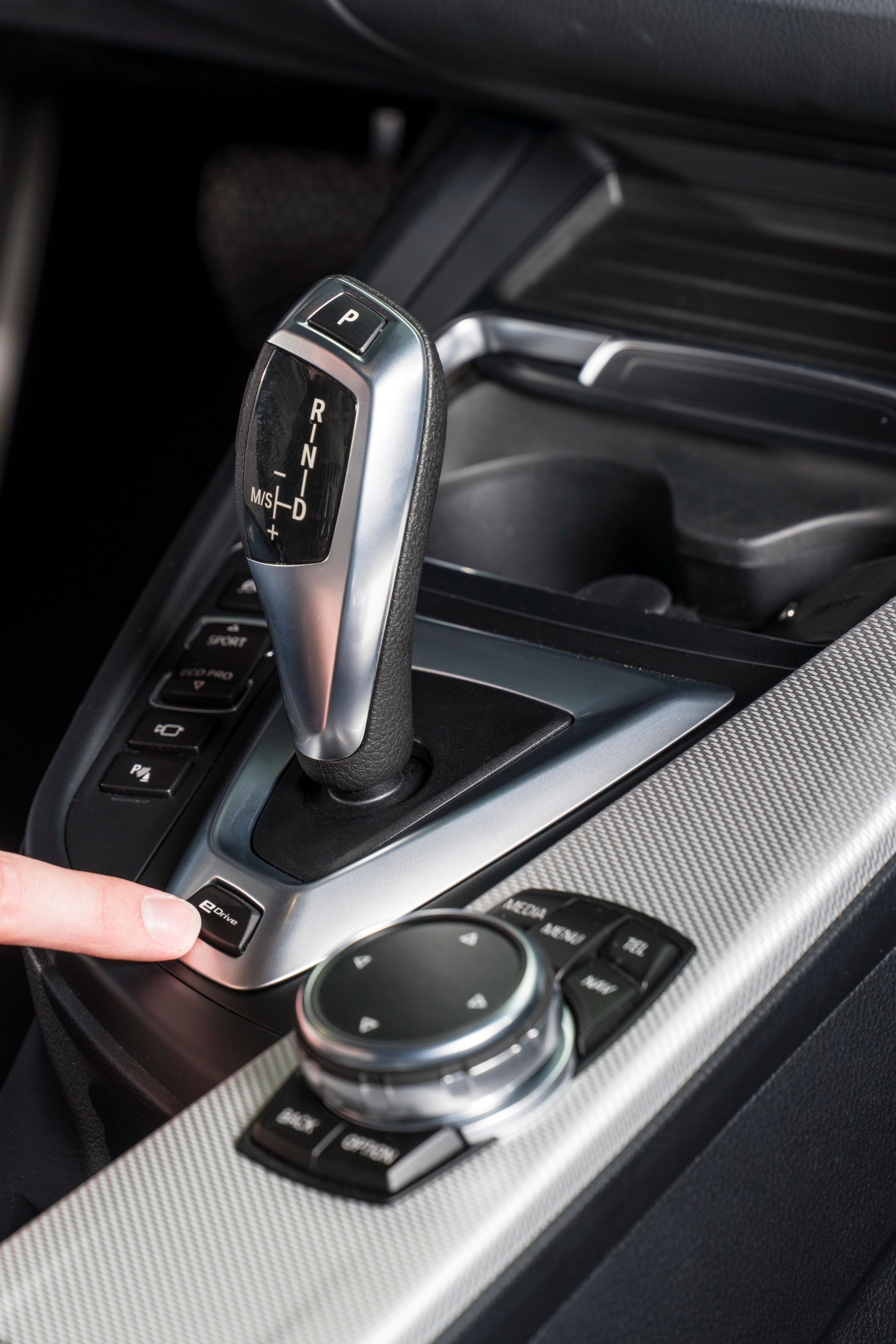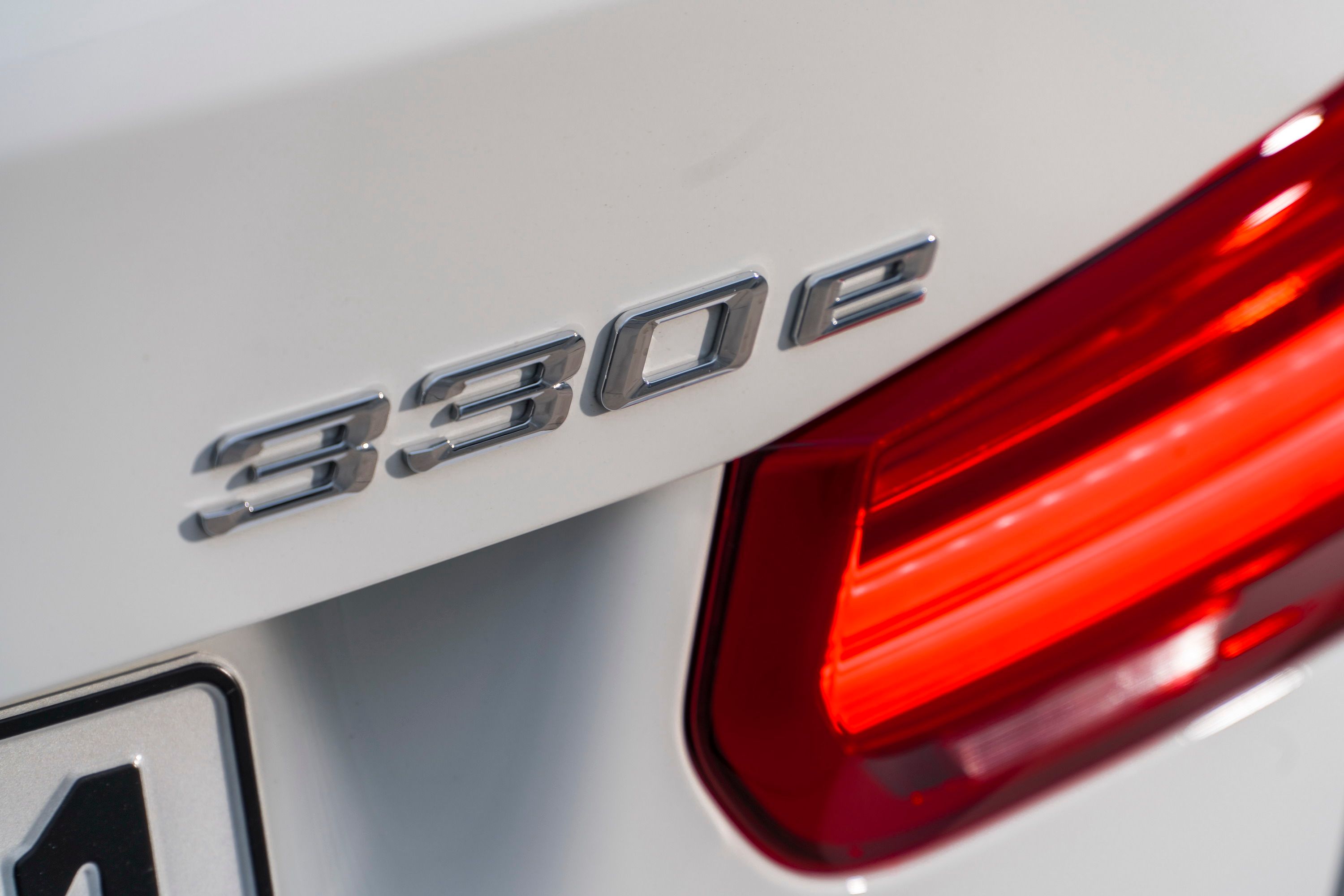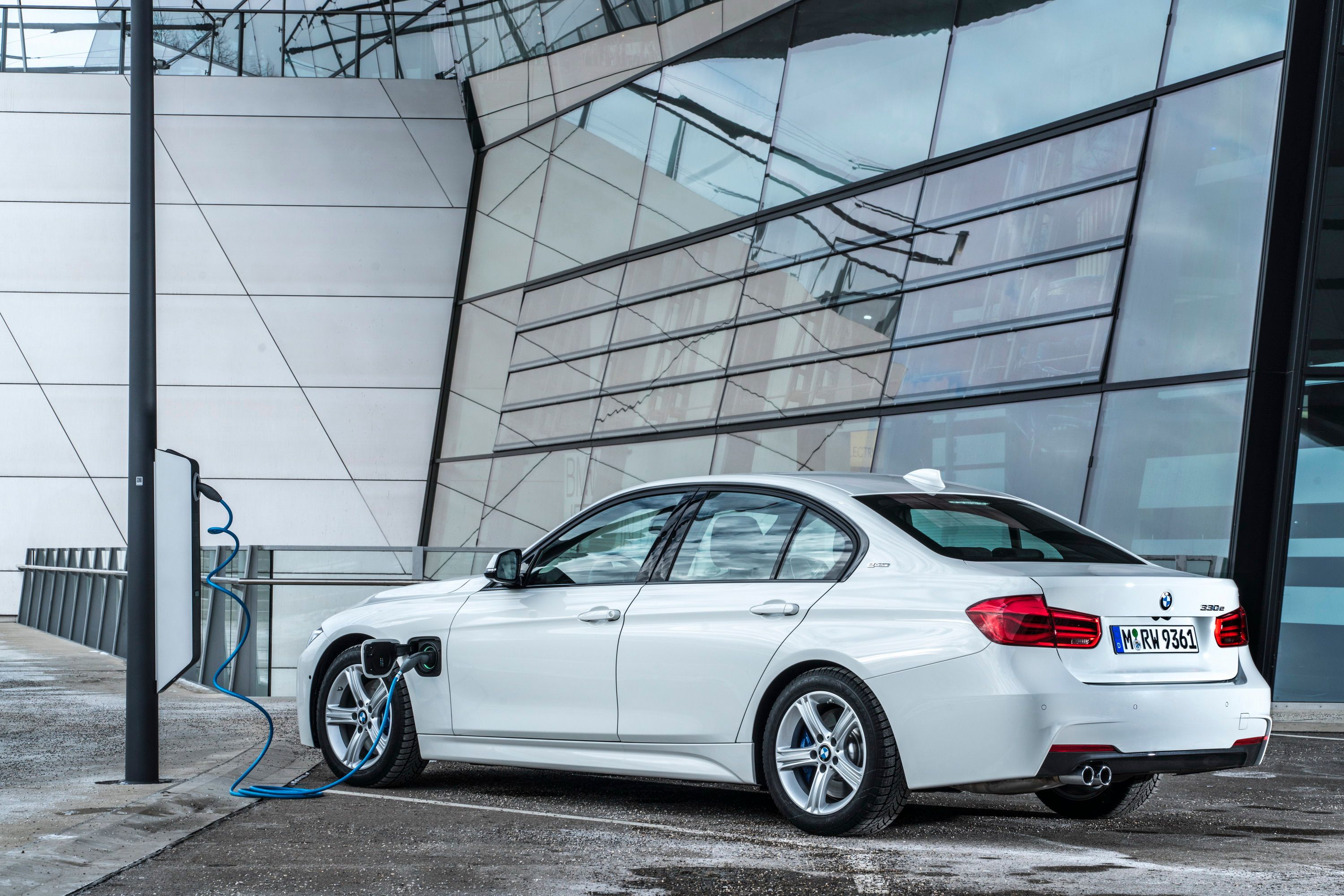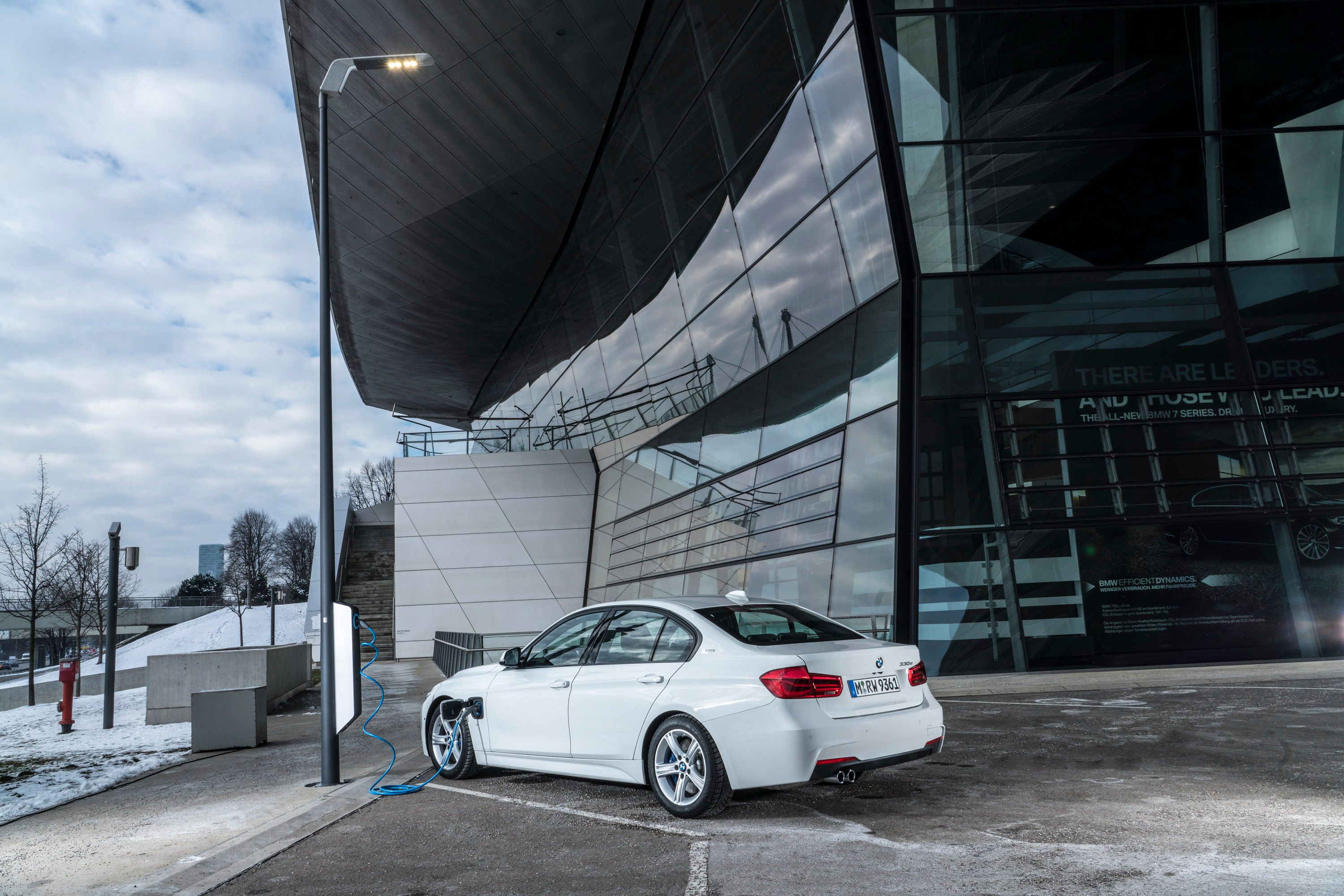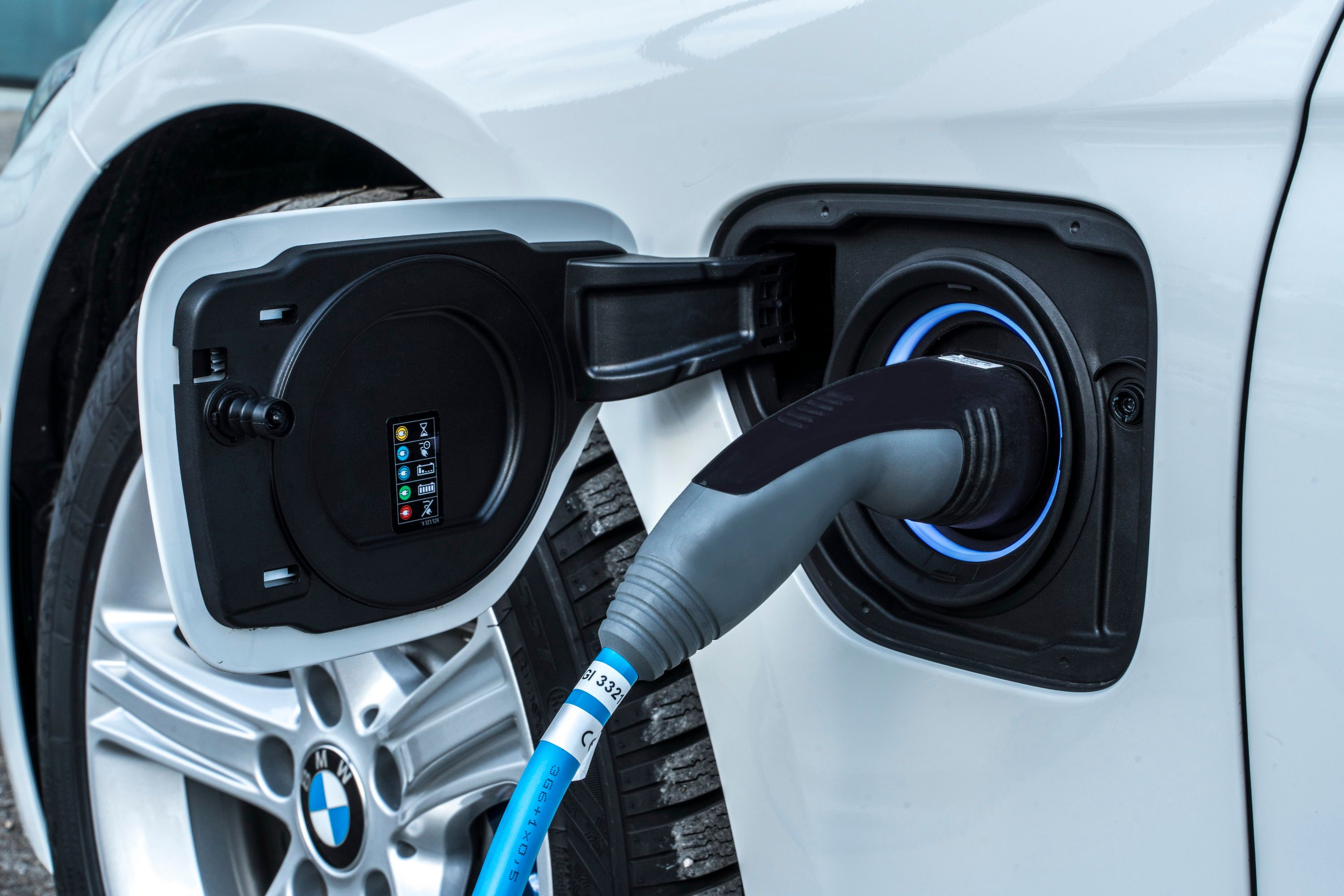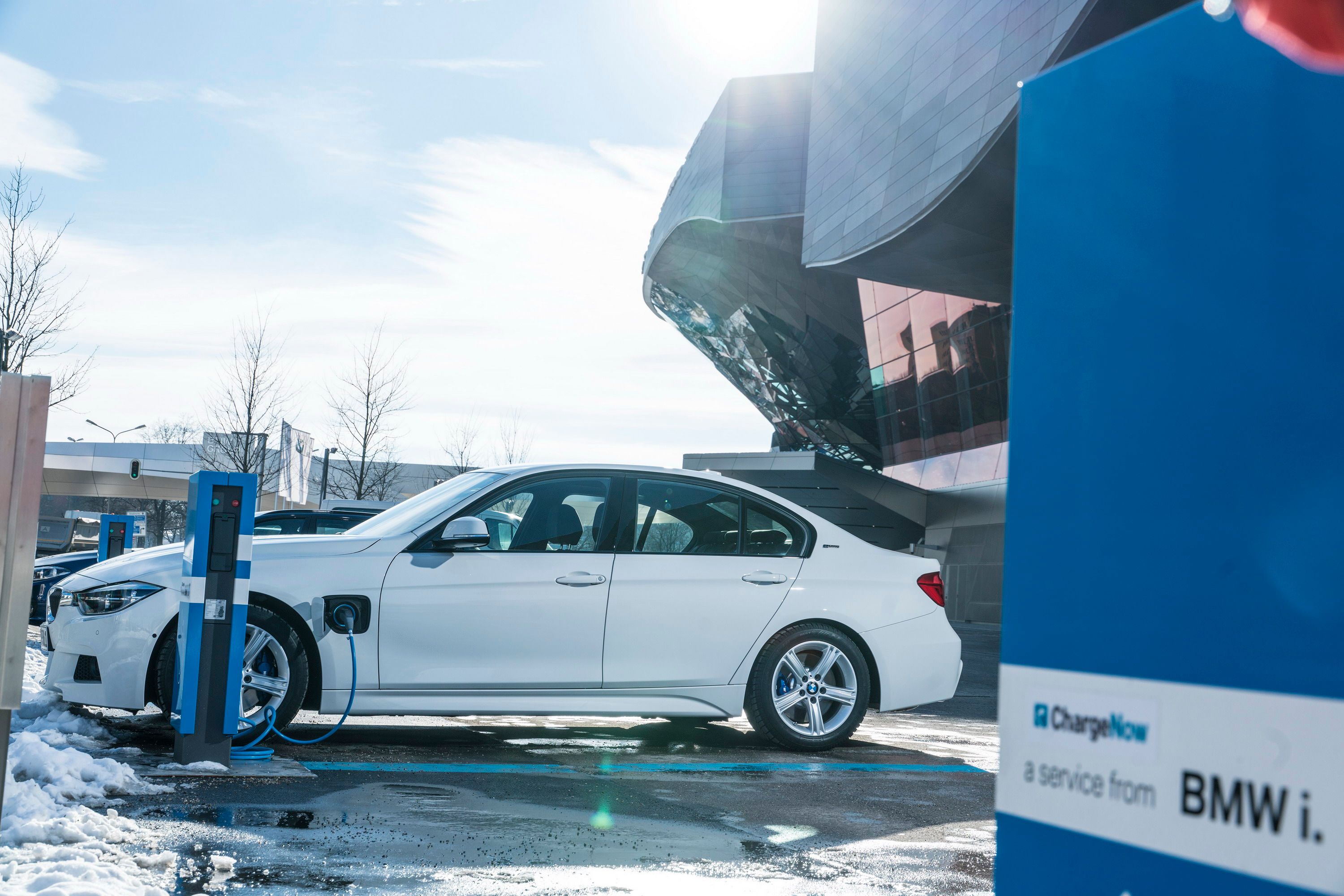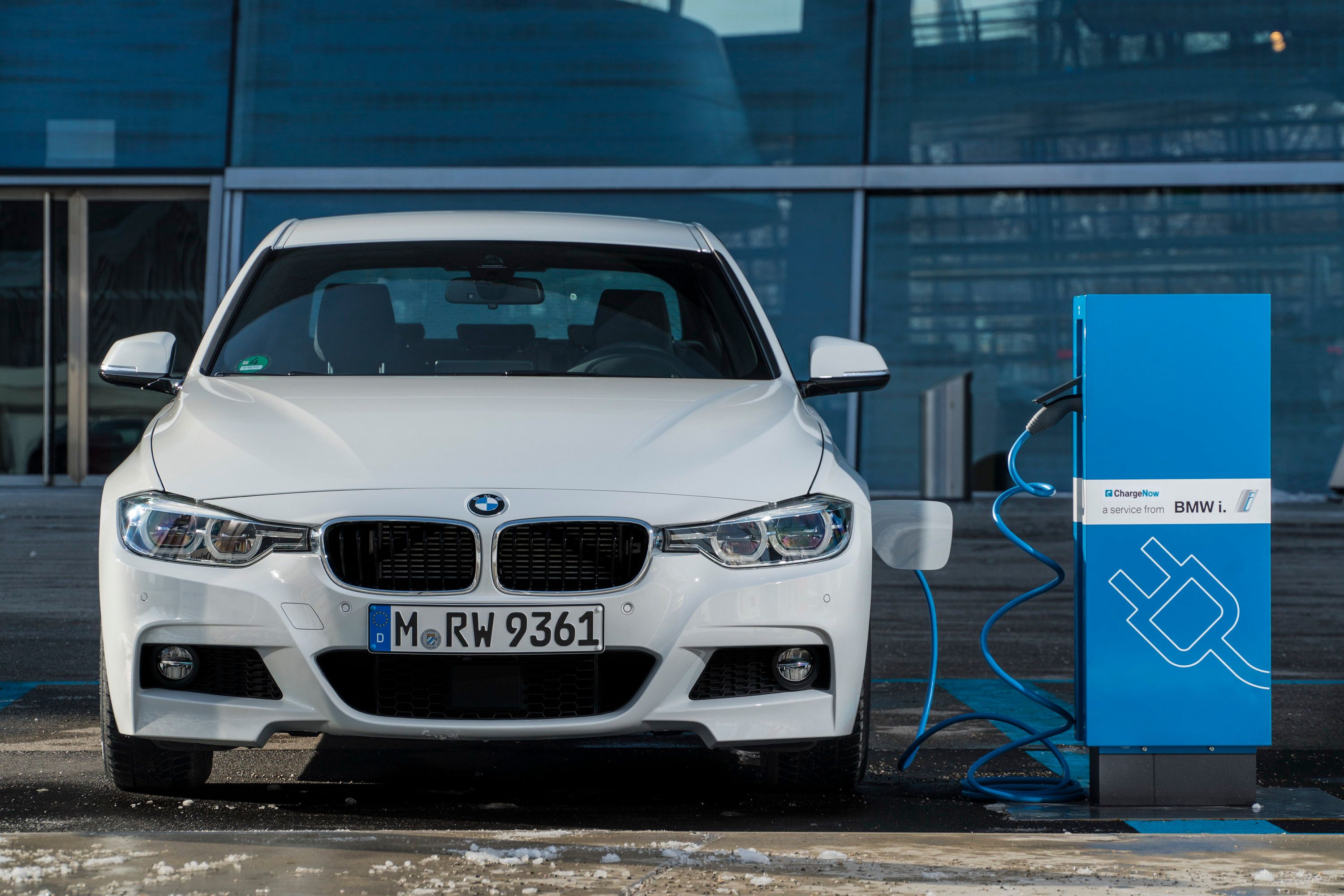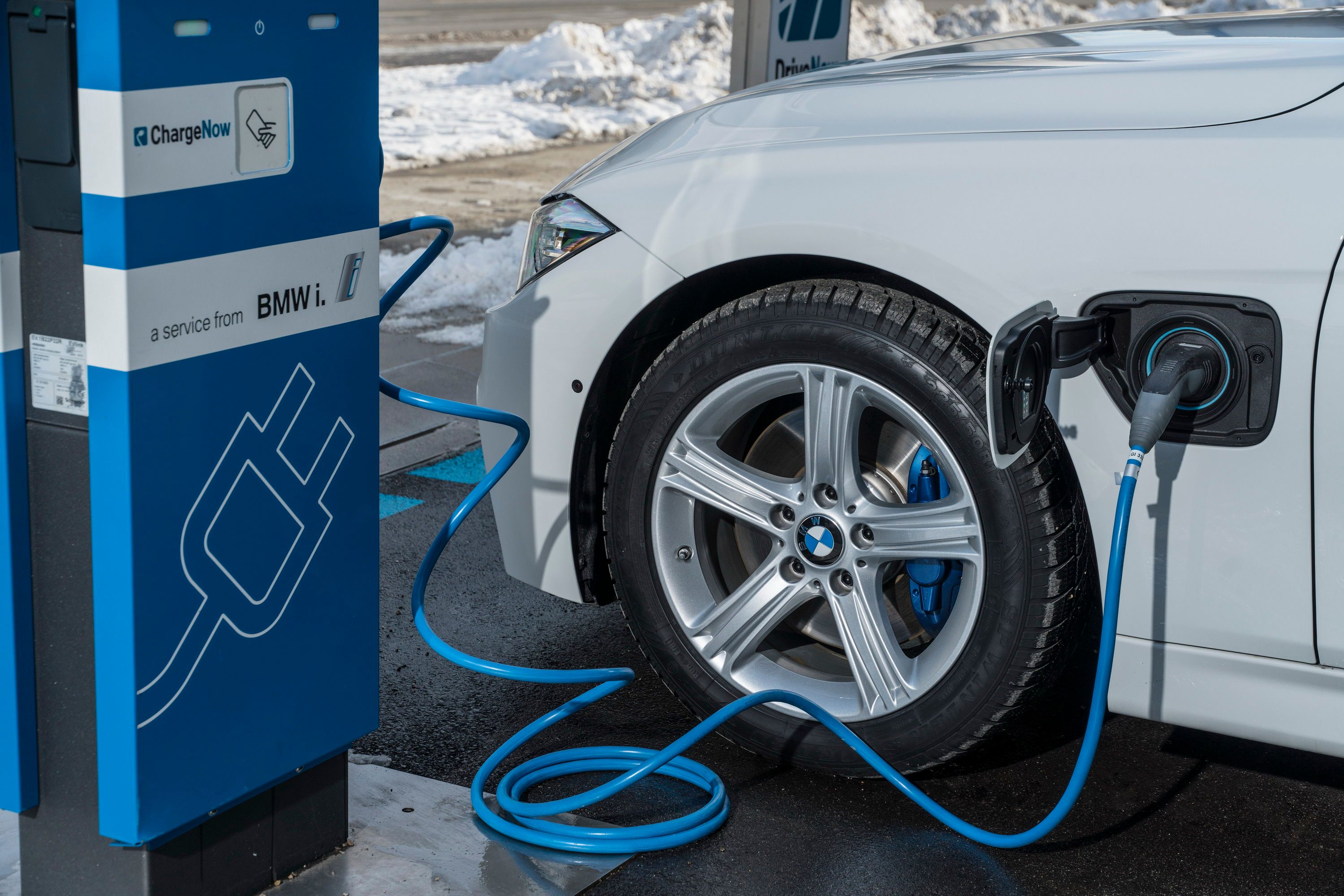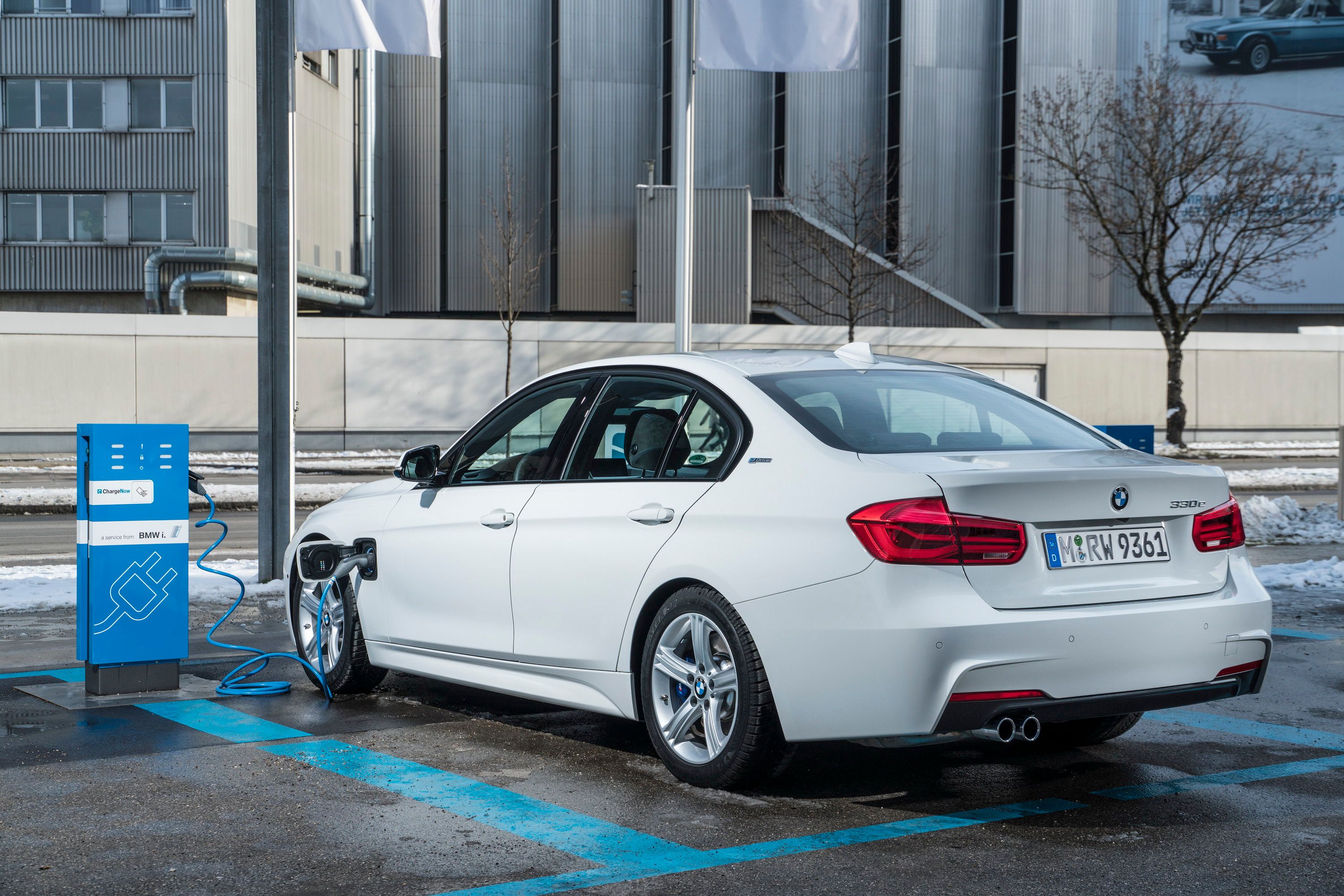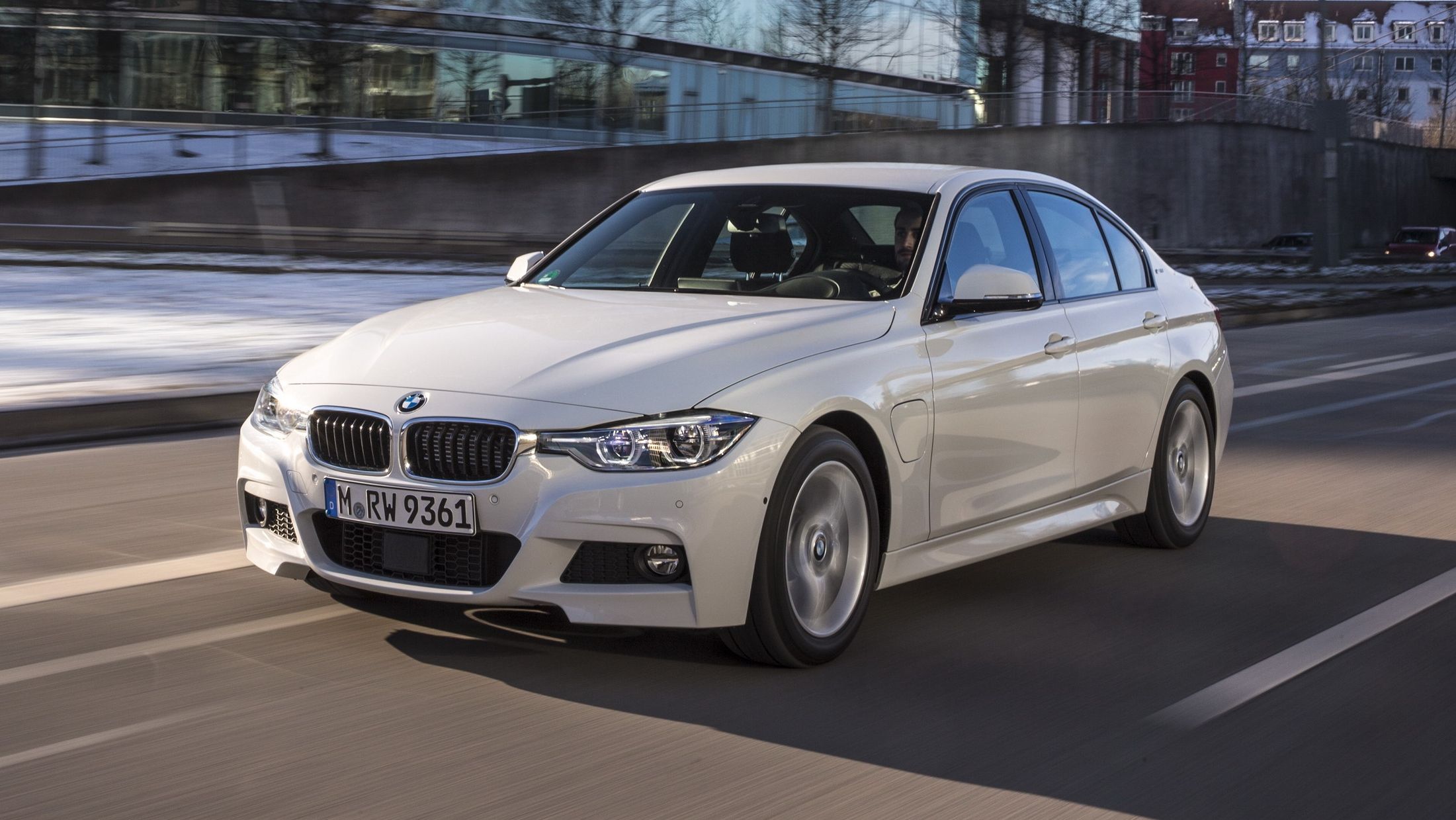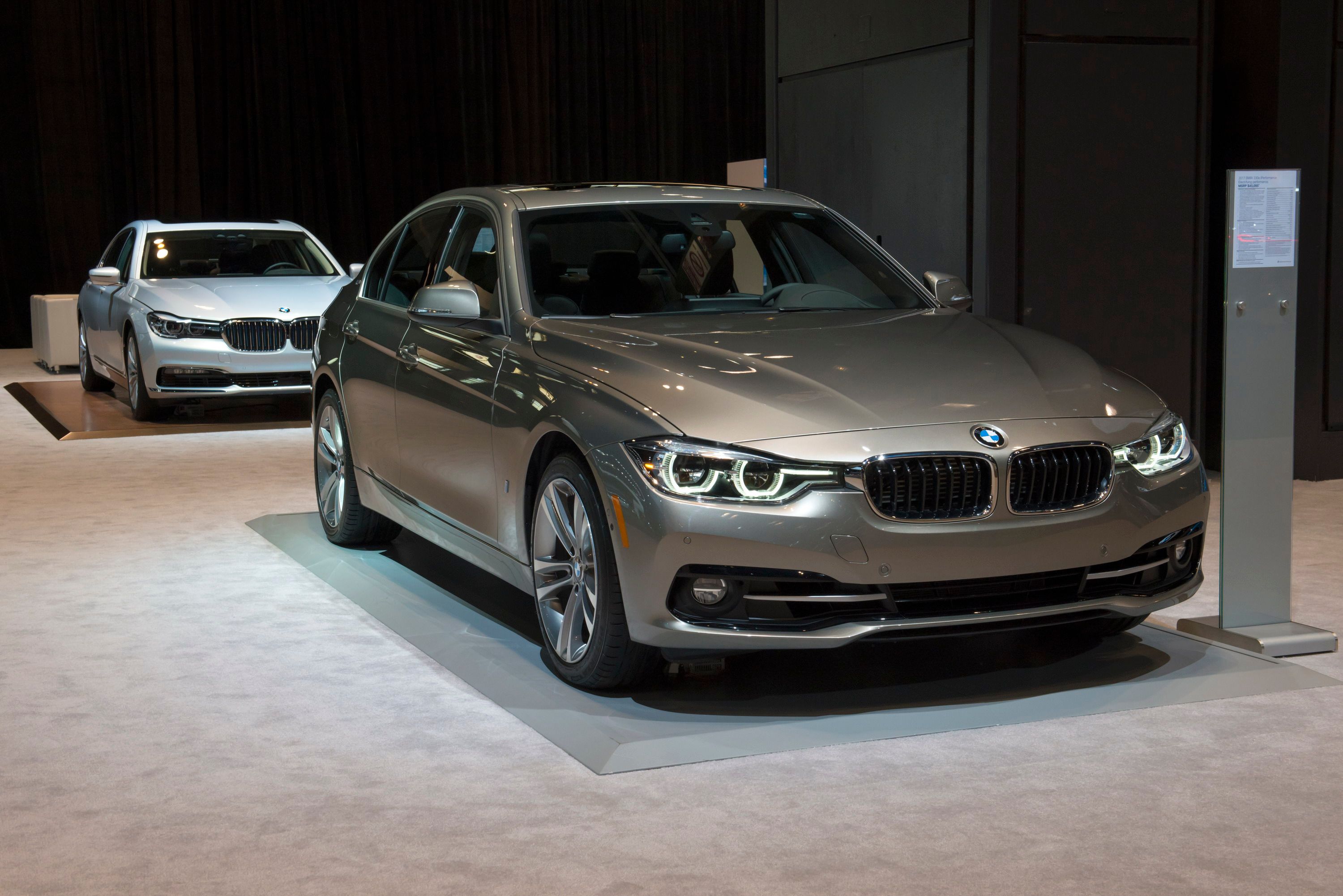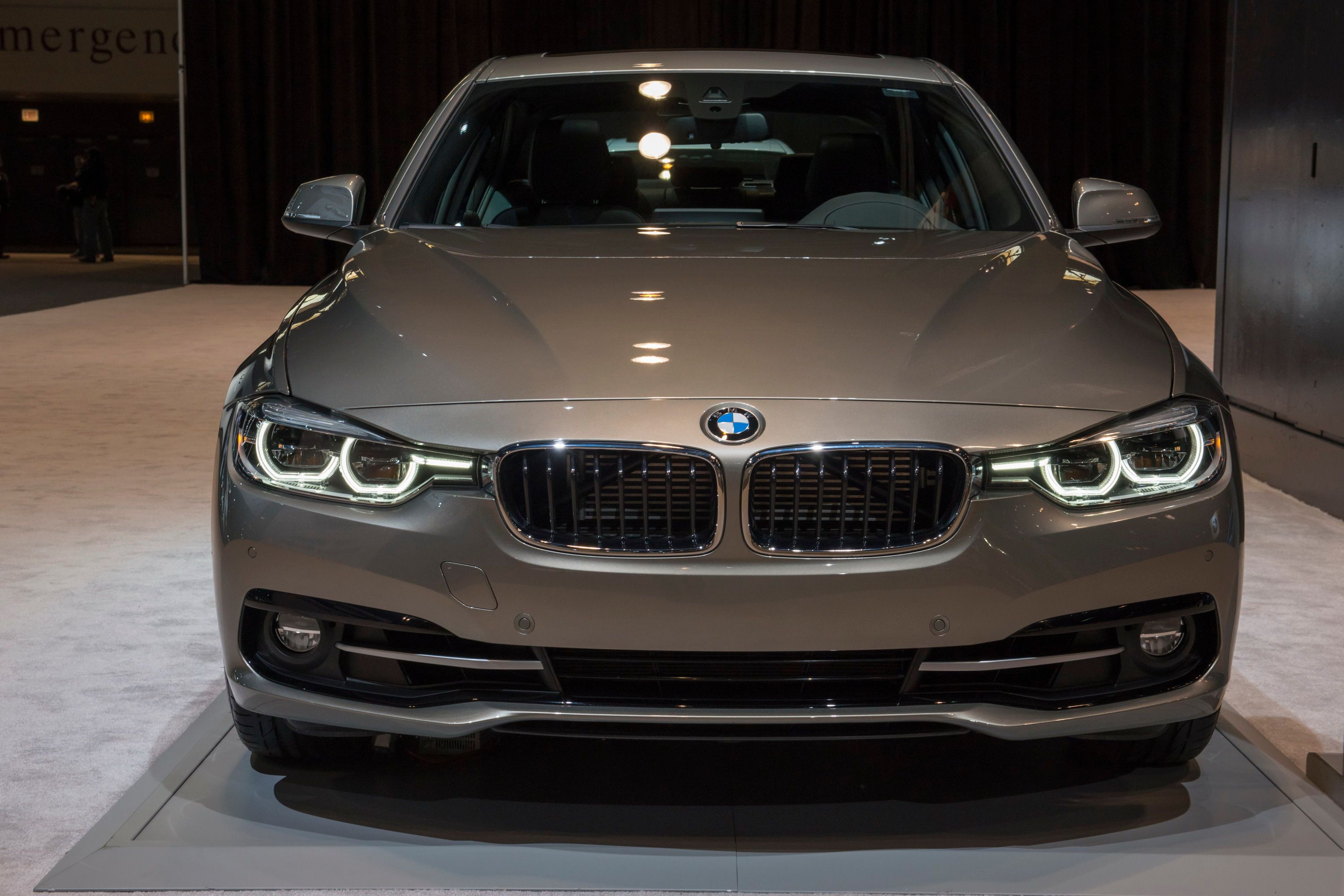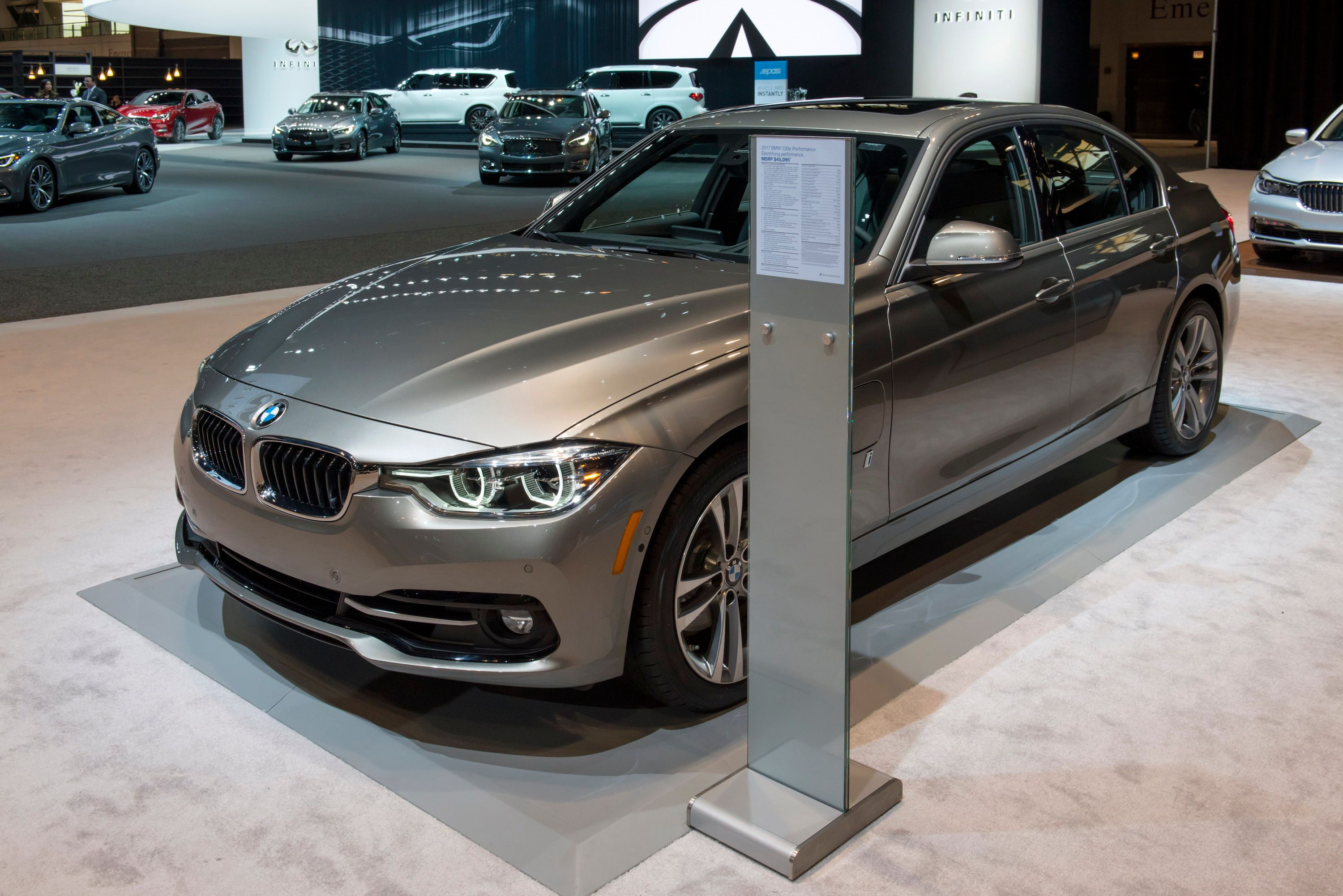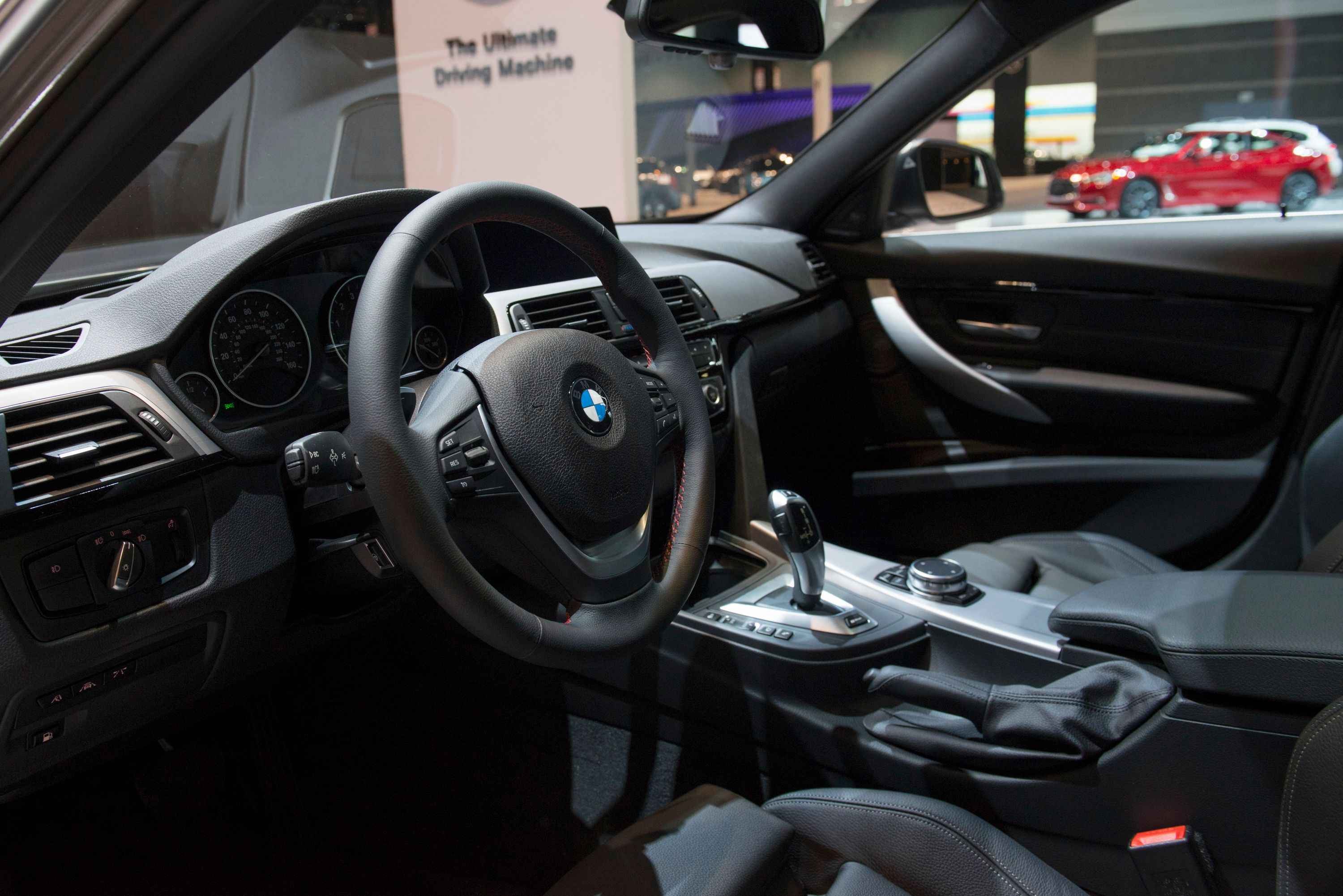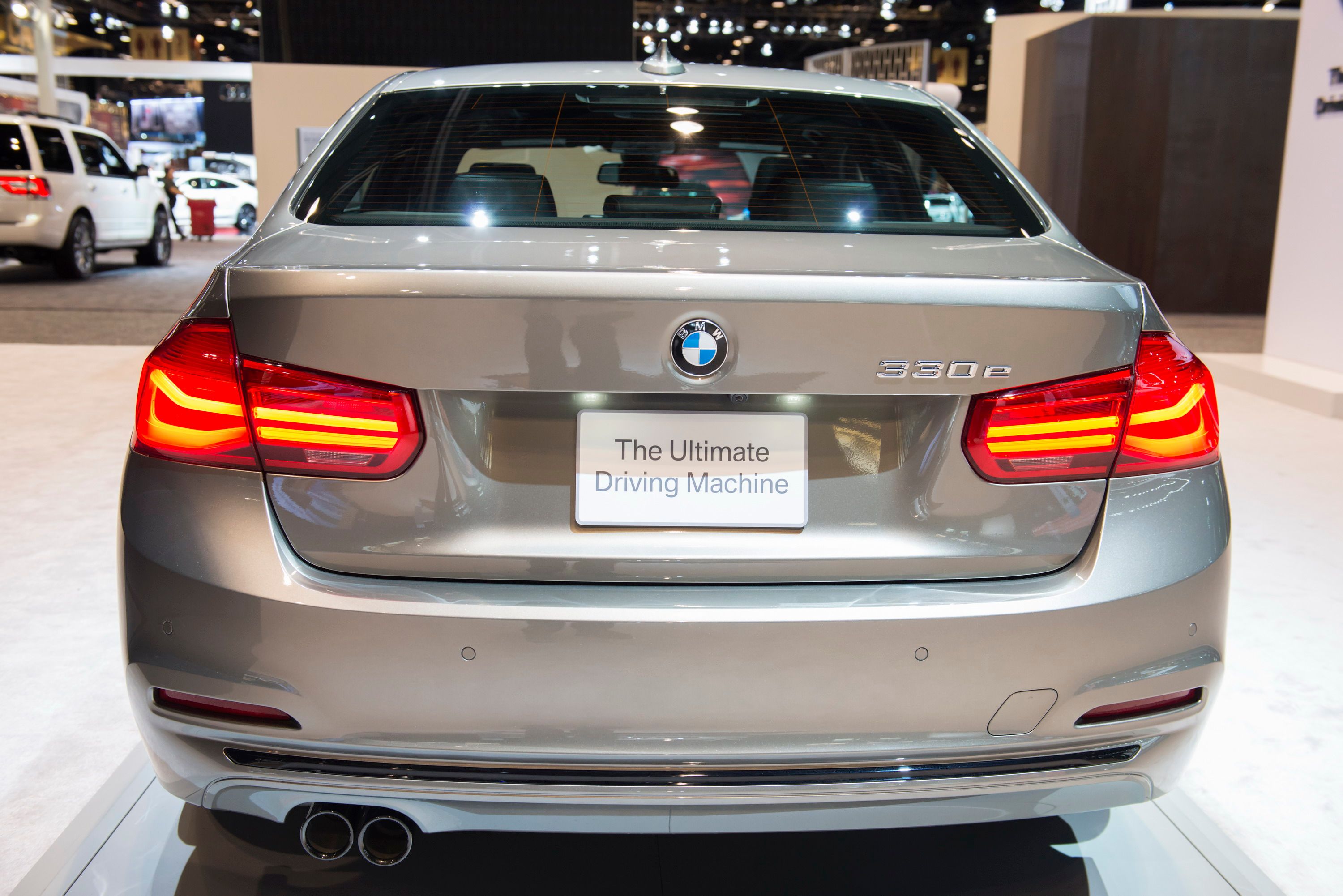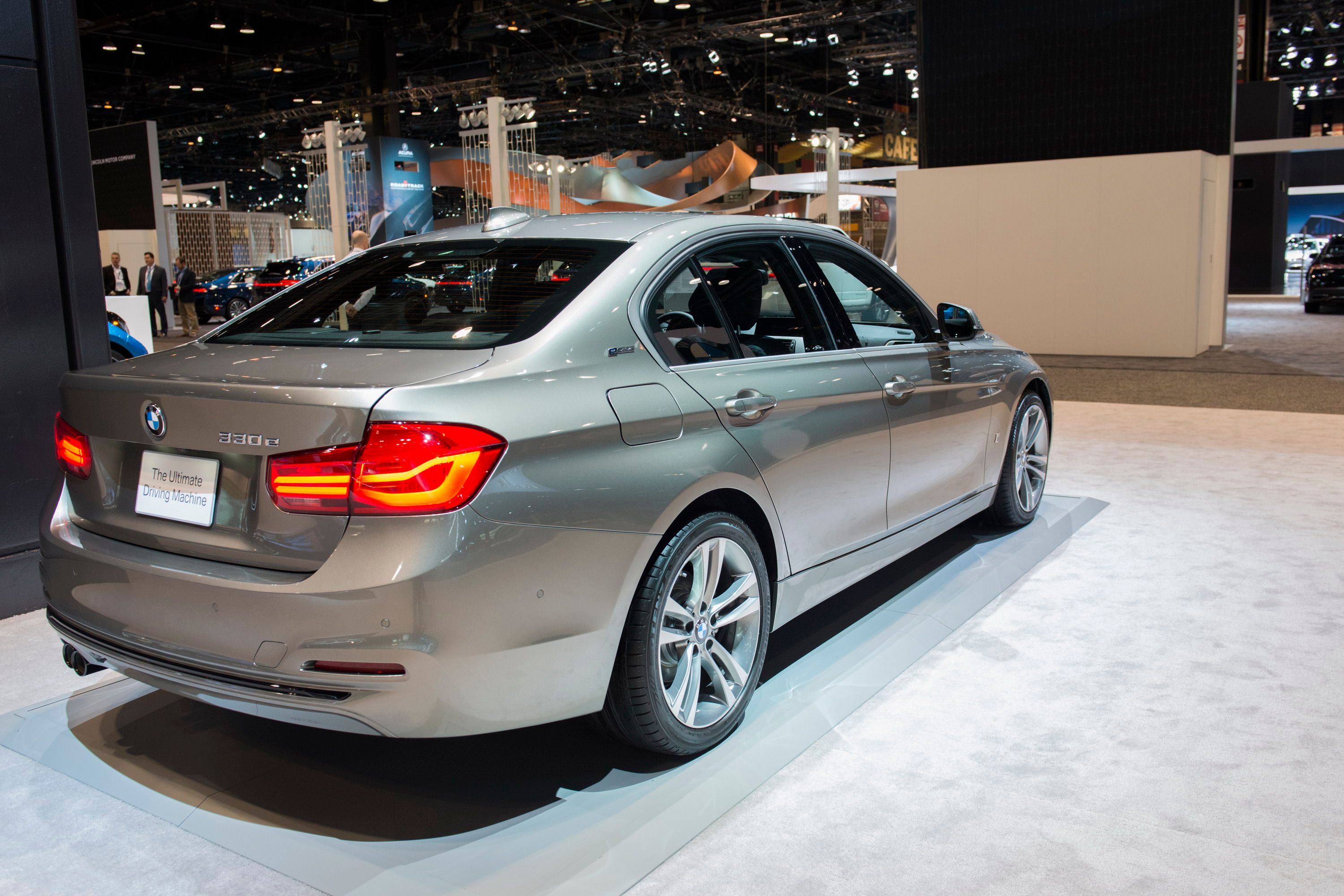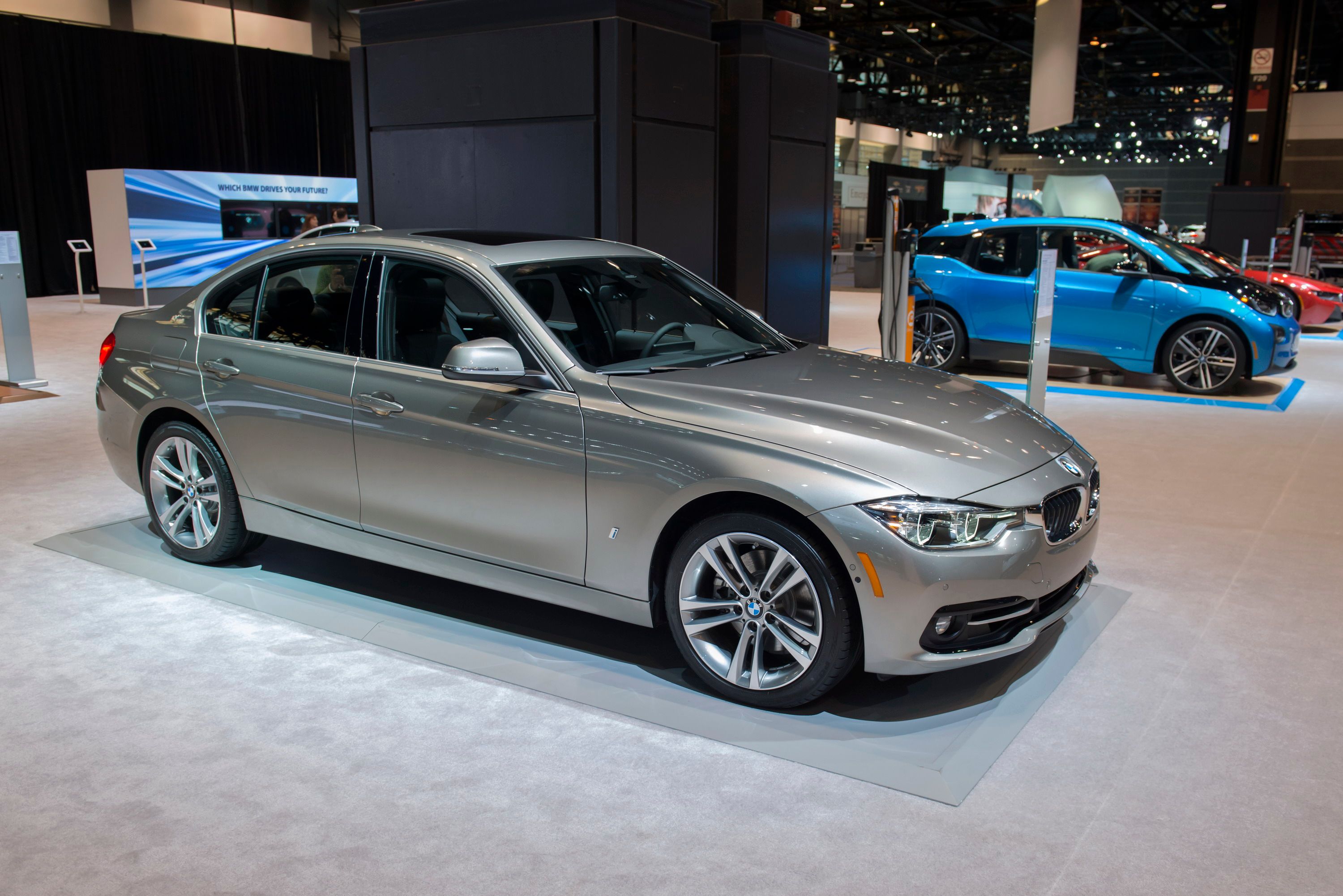BMW->ke178 is adding yet another model to its 3 Series->ke290 lineup, this time in the form of a plug-in hybrid->ke147 that will be known as the 330e iPerformance. The car takes a four-cylinder gasoline engine with TwinPower Turbo technology and mates it with eDrive technology derived from models like the BMW i3 and BMW i8 to deliver upward of 250 horsepower and more than 200 pound-feet of torque. As is the case with most plug-in hybrid models, the 330e iPerformance can be driven on battery power alone for a limited distance.
The 3 Series has arguably set the bar for things like performance and fuel economy in the past, so it’s no surprise that BMW looks to raise the bar again with this plug-in hybrid. The entire electric system has been strategically integrated into the 3 Series to ensure optimal weight distribution and energy savings and, as you would expect, the 330e iPerformance can be charged on the go through ChargeNow – BMW’s i mobility service that offers more than 30,000 charging points in 22 countries.
The 330e goes on sale this summer and will be considered the range-topping model price-wise in the U.S. with a starting invoice higher than that of the $43,000 3 Series Gran Turismo. Before get to further into detail on that, let’s take a closer look at the 330e iPerformance and all it offers.
Update 06/24/2016: Bimmer has announced pricing for the 2017 BMW 330e iPerformance sedan. Check out the prices section below for all the details.
Continue reading to learn more about the BMW 330e iPerformance.
2017 BMW 330e iPerformance
- Make: Array
- Model: 2017 BMW 330e iPerformance
- Engine/Motor: inline-4
- Horsepower: 248
- Torque: 310
- [do not use] Vehicle Model: Array
Exterior
On the outside, there isn’t much that separates the 330e iPerformance from the standard 3 Series Sedan. There is the same aggressive front fascia that manages to give the front end a bit of a smile, and it wouldn’t be a Bimmer without those iconic kidney grills. The sides are largely unchanged with the same side skirts, and it’s the same story in the rear with the same taillights and rear fascia.
To be frank, there are only two exterior changes to speak of in comparison to the standard 3 Series sedan. The first is the small door on the driver side front fender, right between the front wheel arch and the front door. This is the location of the charge port for the onboard lithium-ion battery. The second change comes in the rear and involves the lower insert on the rear fascia. Since the 330e has a four-cylinder engine, there is only one set of exhaust outlets on the driver side. Therefore, the insert has been modified slightly to accommodate just one dual exhaust outlet.
Interior
Inside, we find more of the same and see the same features that came with the mid-cycle facelift. This means the 330e has the same clean look, chrome highlights, and high-gloss black surfaces throughout the cabin. On the center console, you’ll find a new eDrive button that allows the driver to switch between three specific drive programs – AUTO eDRIVE, MAX eDRIVE, and SAVE BATTERY.
Furthermore, the 330e iPerformance comes with a hybrid-specific Proactive Driving Assistant that is built into the BMW navigation system, basically linking the BMW EfficientDynamics system and BMW’s ConnectedDrive technology. When the navigation system is in use, it takes available information from the given route and uses it to determine how and when to use the electric drive system. This enables the car to run automatically in all-electric mode when traveling through cross-town links or in residential areas. It also uses the electric drive function when climbing hills, and automatically recuperates the energy used on the subsequent downhill stretch.
Drivetrain
This is where the real story is when it comes to the 330e. The gasoline powered engine is the same 2.0-liter, TwinPower turbocharged, four-cylinder that produces 180 horsepower and 215 pound-feet of torque. Then there's the electric motor connects to a 7.6 kWh lithium-ion battery and produces an additional maximum output of 87 horsepower and 184 pound-feet of torque. When used together, the total system output is 248 horsepower and 310 pound-feet of torque – that’s eight horsepower and 55 pound-feet more than the 328i Sedan.
Power from the engine and hybrid drive system is channeled through an eight-speed Steptronic Sport automatic transmission to the rear wheels. Since the power created by the electric drive system is also routed through the transmission, lowering the overall load on the motor. The battery management system and cooling system was derived from the BMW's other i programs, and the battery can be recharged using any domestic power socket. All told, the 330e can hit 60 mph in 5.9 seconds on the way to a top speed of 140 mph. Furthermore, the 330e offers an all-electric range of up to 14 miles with a top speed of 75 mph.
As mentioned before, the 330e has the eDrive-specific programs, AUTO eDRIVE, MAX eDRIVE, and SAVE BATTERY. When in AUTO eDRIVE, the engine and motor work in harmony. The all-electric system operates up to 50 mph, at which point the engine fires up and takes over for higher speeds. This system is automatically selected every time the car is started. Moving over to MAX eDRIVE, the car runs on electric power only for up to 14 miles and up to 75 mph. In this mode, the engine will kick in if the throttle is fully depressed. In SAVE BATTERY mode, the system has a dual function. If the battery is below a 50-percent charge, the battery will be brought up to a 50-percent charge. If the battery is at or above 50 percent, the system will maintain that charge so that the electric system can be used at a later time.
In addition to the eDrive-specific programs, the 330e also has the same Driving Dynamics Control found in other BMW models, offering ECO PRO, COMFORT, SPORT, and SPORT+ modes. This system not only adjusts chassis functions and shift functions of the transmission but the hybrid drive system as well. In COMFORT mode, hybrid system output is regulated to provide economical driving. In SPORT and SPORT+ mode, the engine and motor are permanently active, allowing full system output from both. In ECO PRO mode, an emphasis is put on the electric drive system to provide the best economy possible from the hybrid drive system. To learn even more about the drivetrain of the 330e, you can see all of the details in the press release below.
Prices
The 2017 330e iPerformance has a sticker price of $44,795. That price includes destination and handling costs, but excludes taxes and any additional options. It also represents a price increase of $100 over the 2016 model year. Given the options available for other 3 Series models, the 330e could go for upward of $55,000 when fully equipped.
Competition
Lexus ES 300H
The Lexus ES 300H entered a new generation in 2013, and also came in hybrid form for the first time. It is powered by a 2.5-liter four-cylinder engine, combined with an electric motor. Combined, the system delivers 200 horsepower and up to 40 mpg. Power is sent to the wheels via a six-speed sequential-shift automatic transmission. The ES 300H offers a drive mode selector, similar to that found in the BMW 330e and includes an EV mode that allows travel using just the electric motor and onboard battery pack. All told, the ES 300H can hit 60 mph in 8.1 seconds and has a top speed of 112 mph. As of the time of this writing, the ES 300h starts out at $40,920 before options, taxes, and destination charges.
Read our full review on the Lexus ES 300H here.
Conclusion
The 330e joins BMW’s hybrid lineup next to the $140,000 BMW i8, $62,000 BMW X5, and the $62,000 ActiveHybrid 5. Needless to say, it’s about time BMW brings a performance-based hybrid drivetrain to the 3 Series lineup. When compared to other luxury hybrid models, like the Lexus ES 300H, it should bring some pretty stiff competition given the power output. Considering the 330e has an all-electric range of just 14 miles, it should be suitable for short trips to the store or short work commutes without using a drop of gas, assuming it is plugged in every time it is parked. At this point, I think it is time that manufacturers start developing new battery technology that will provide longer ranges for these plug-in hybrids. Personally, until I can get a good 50 miles on all-electric power, it doesn’t make sense to go for a plug-in hybrid. I’m sure I’m not the only one that feels that way.


